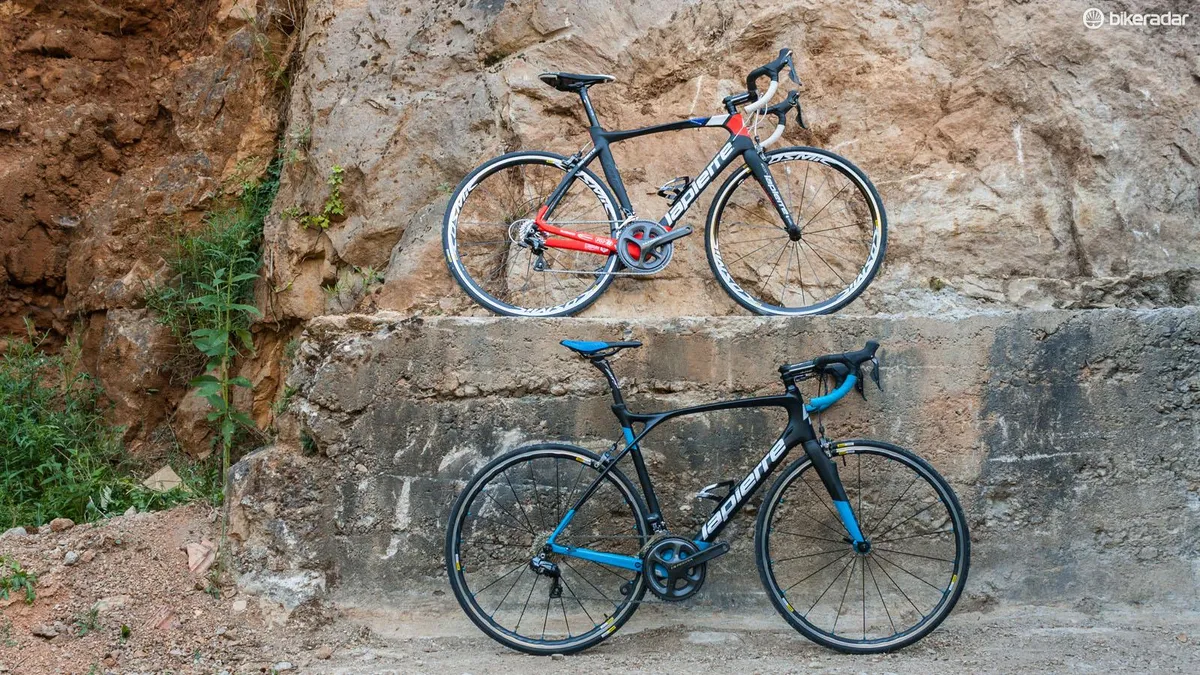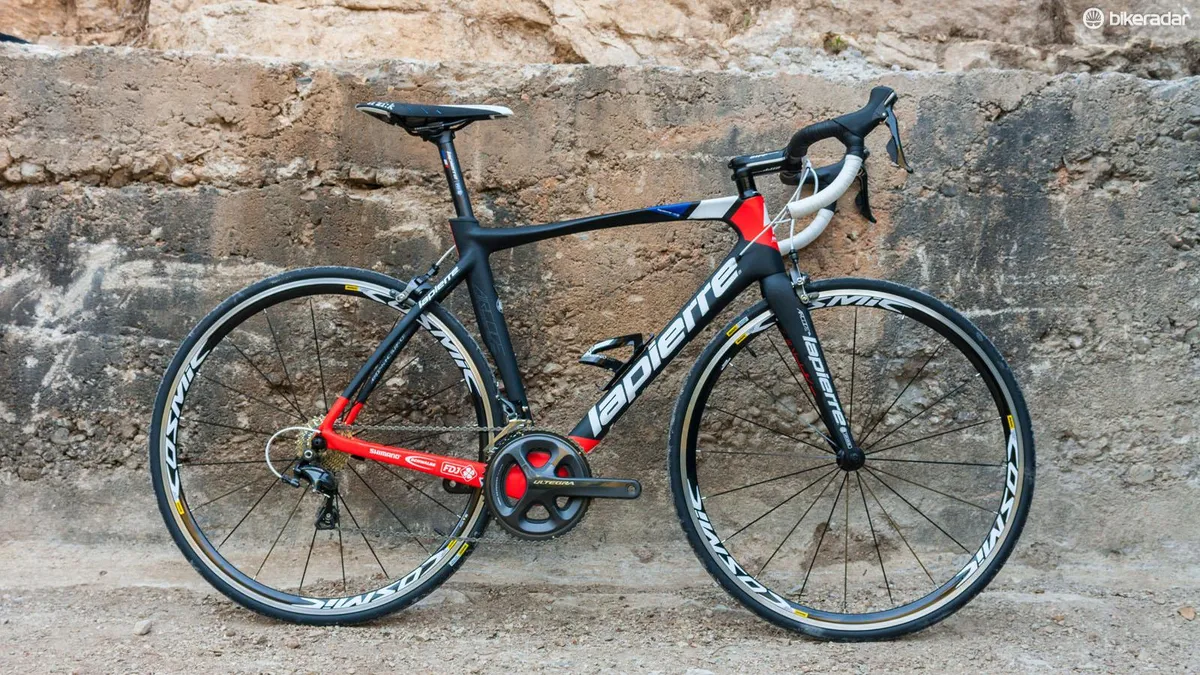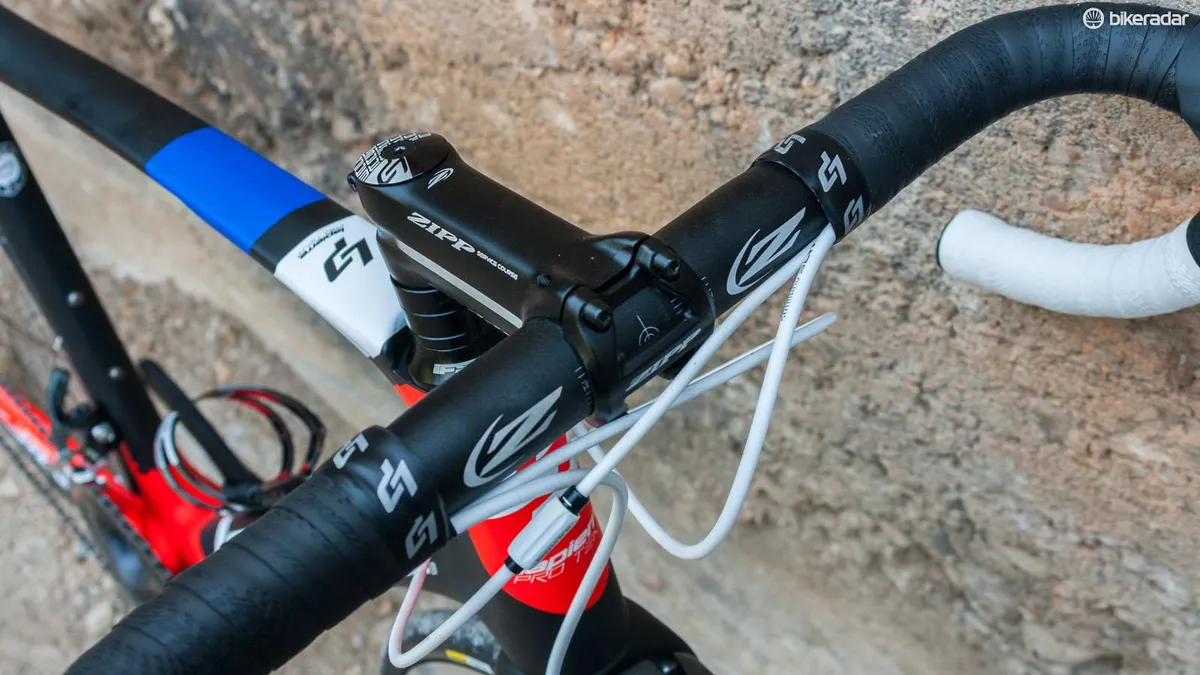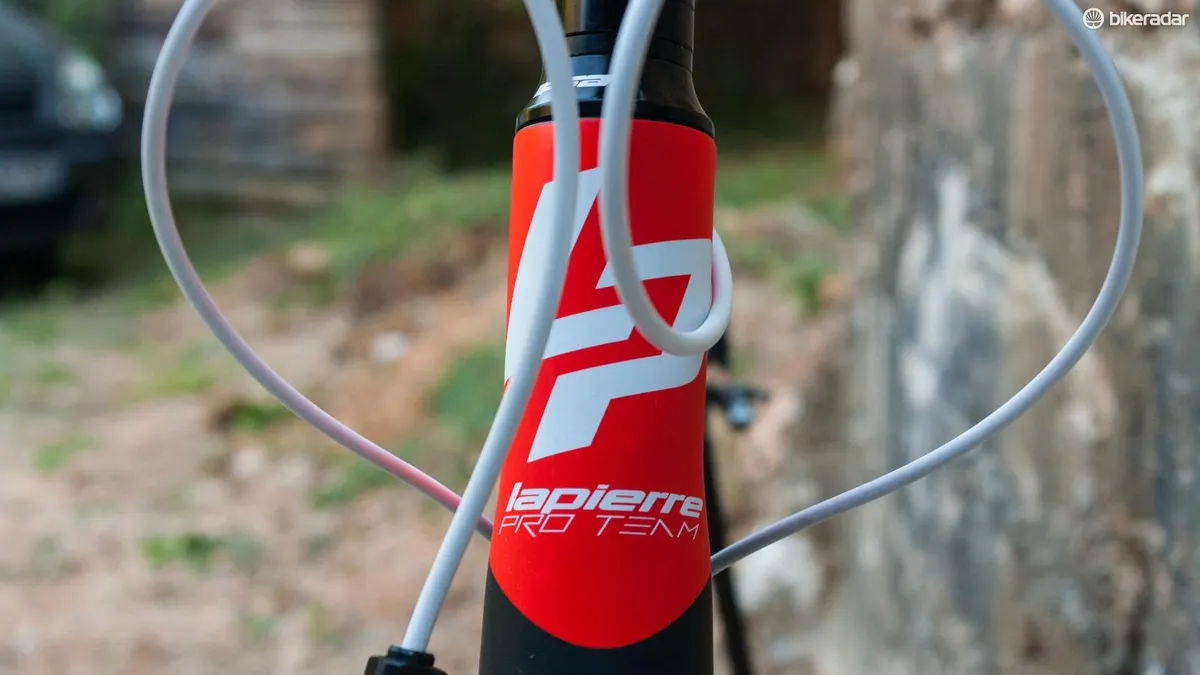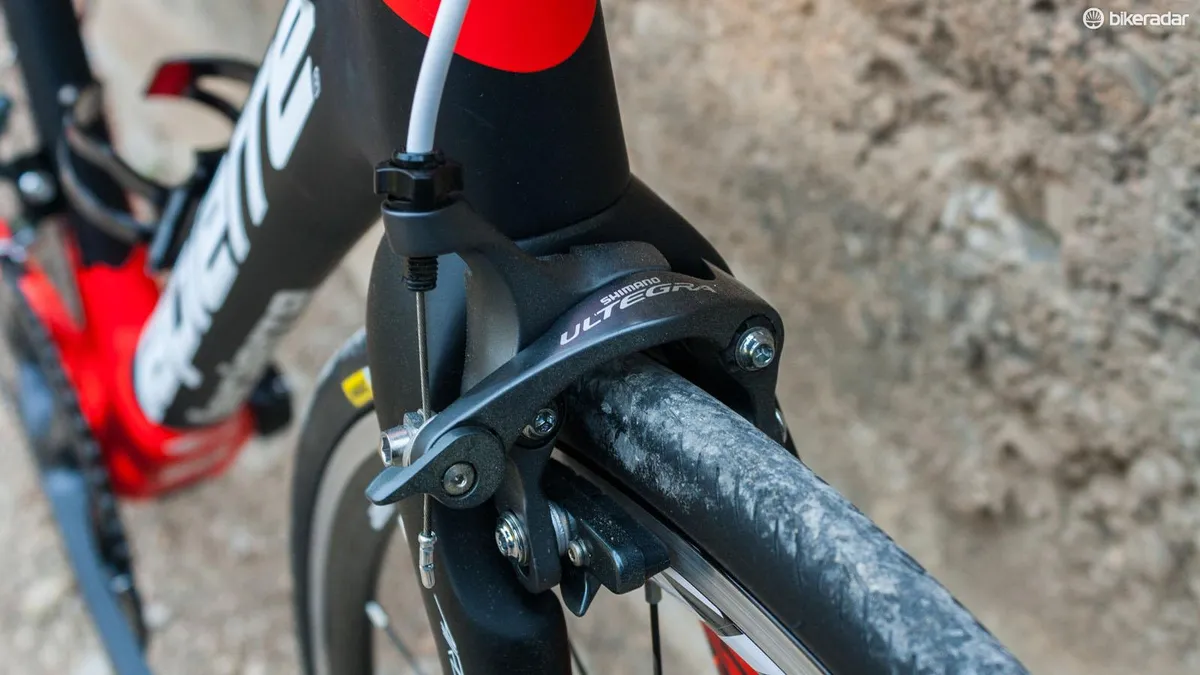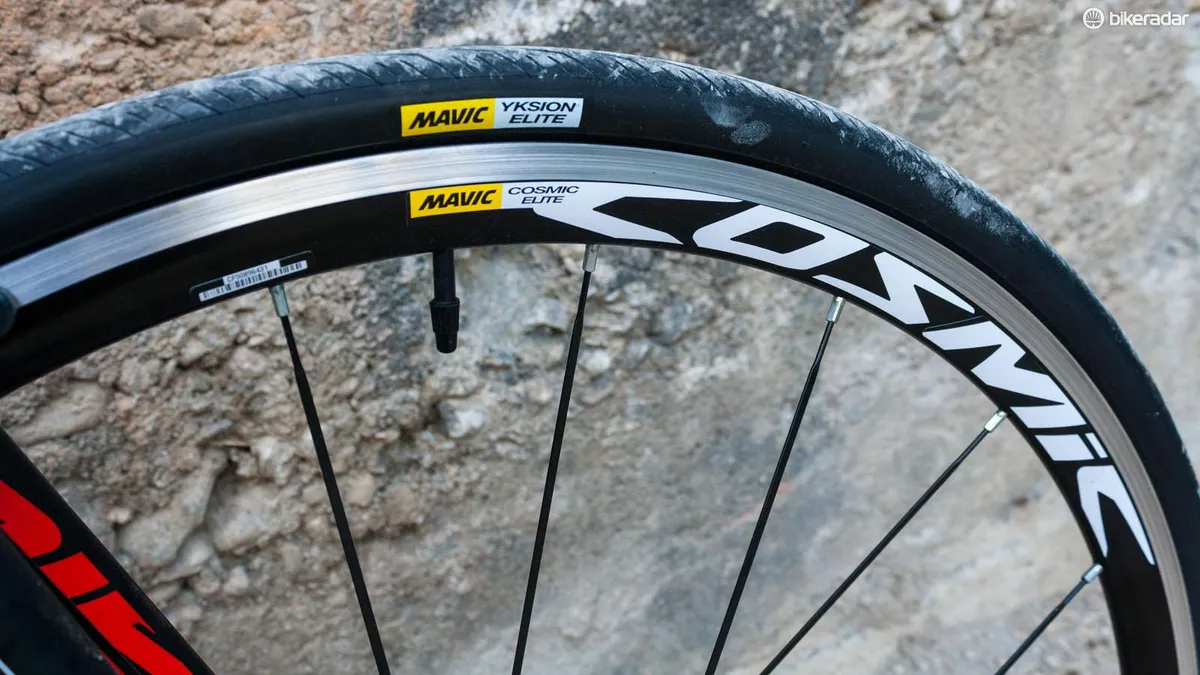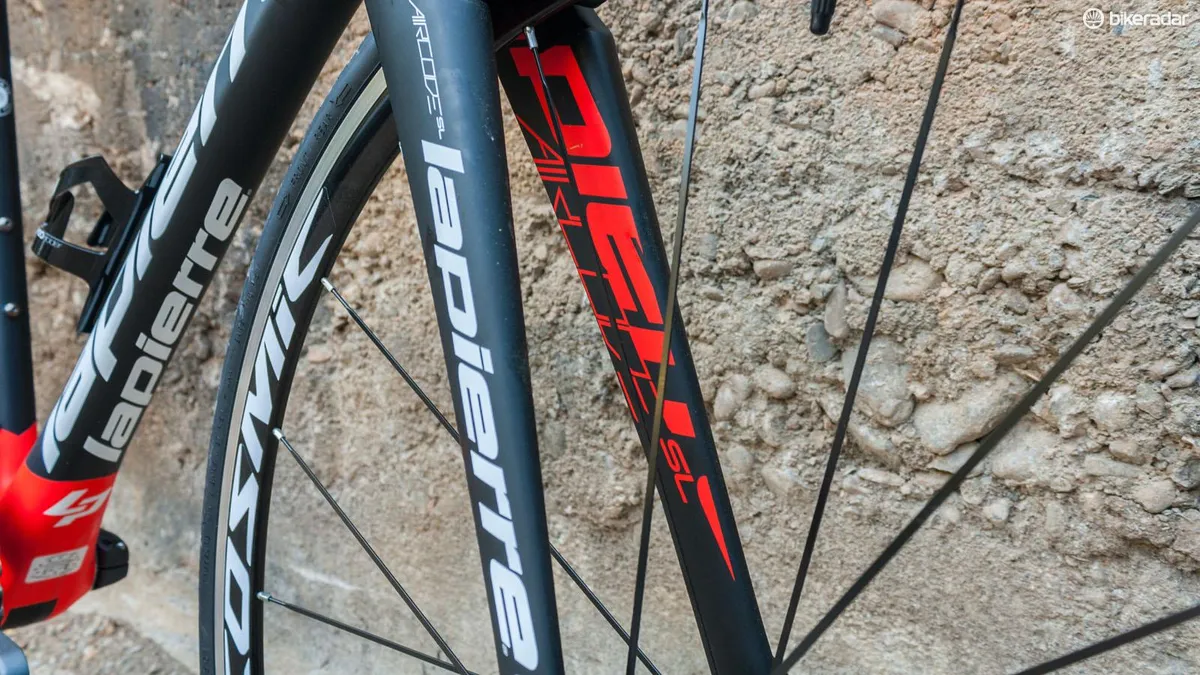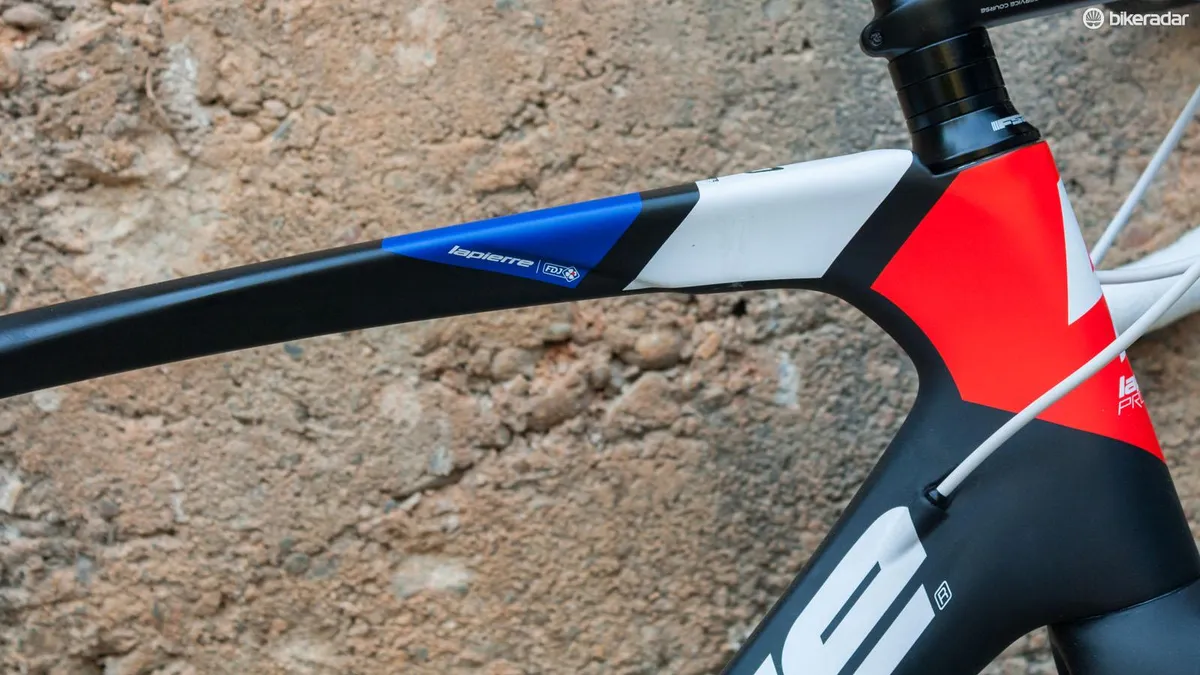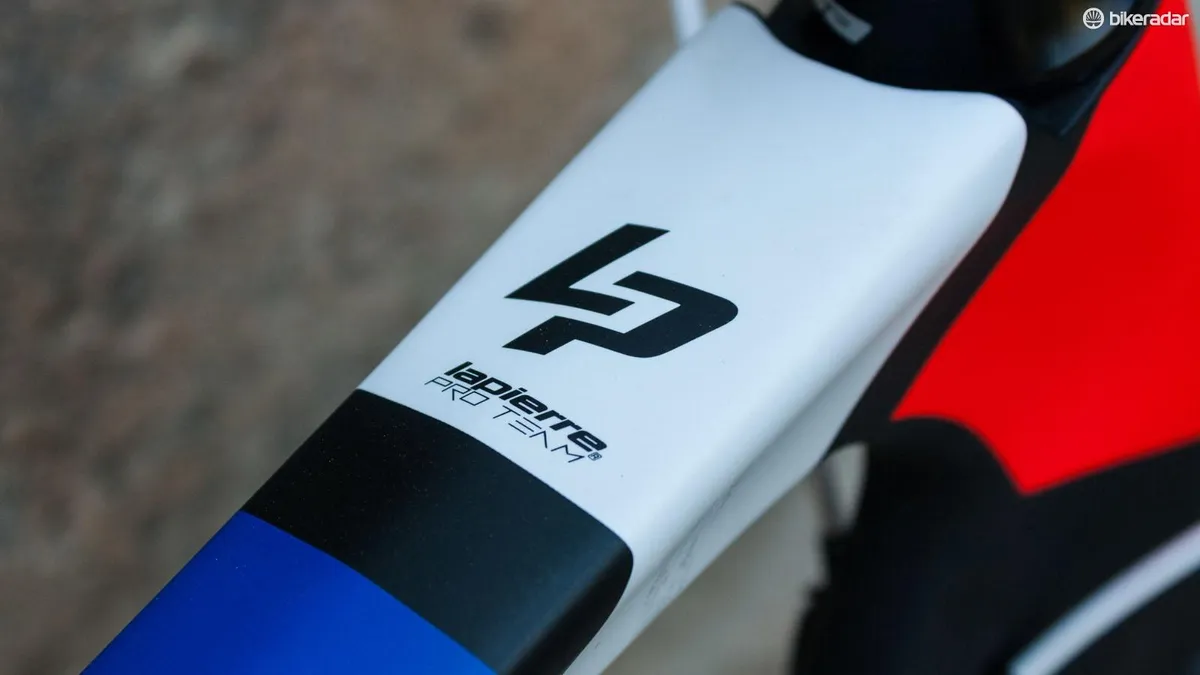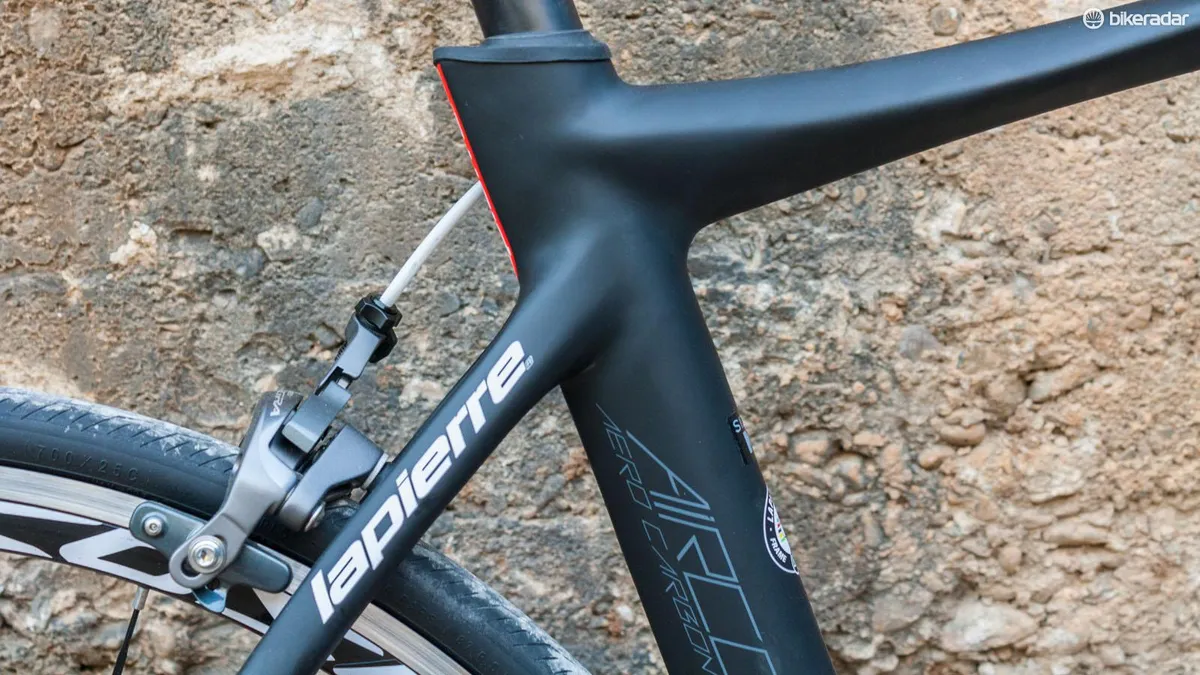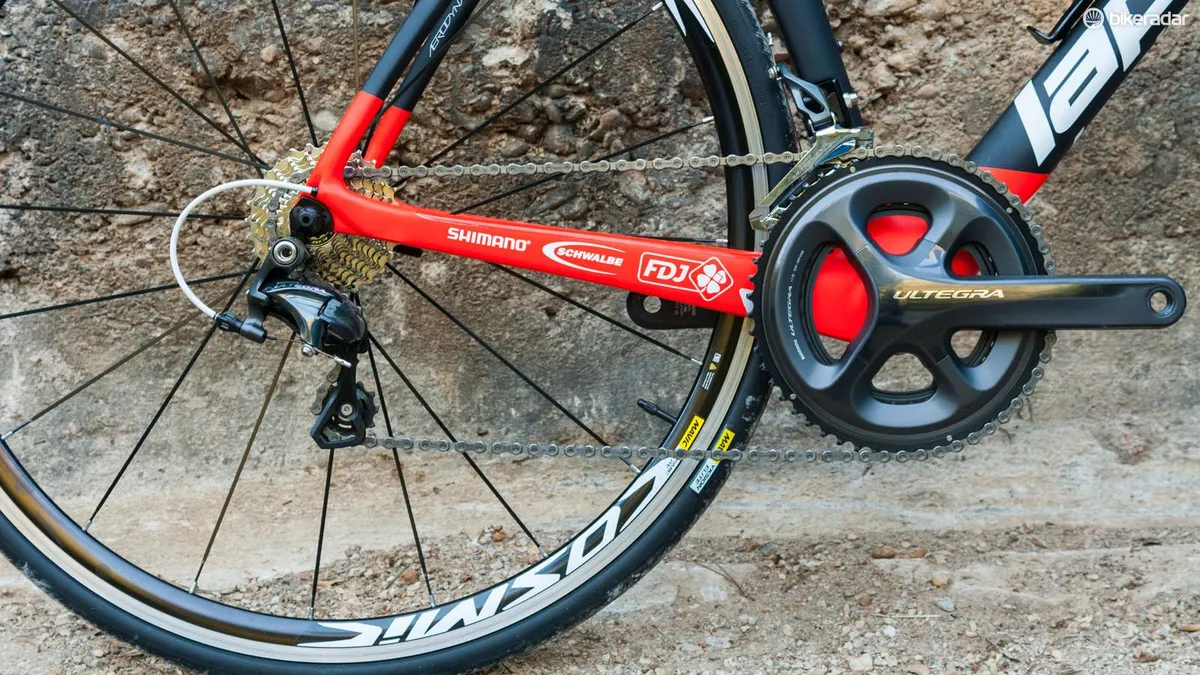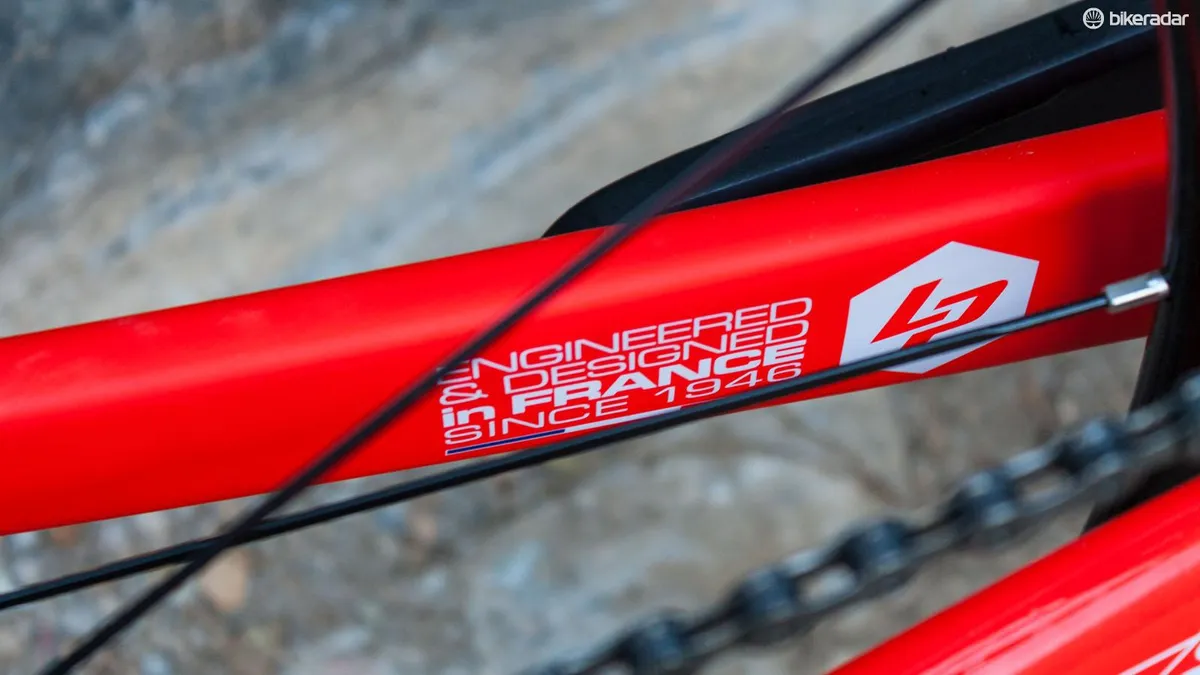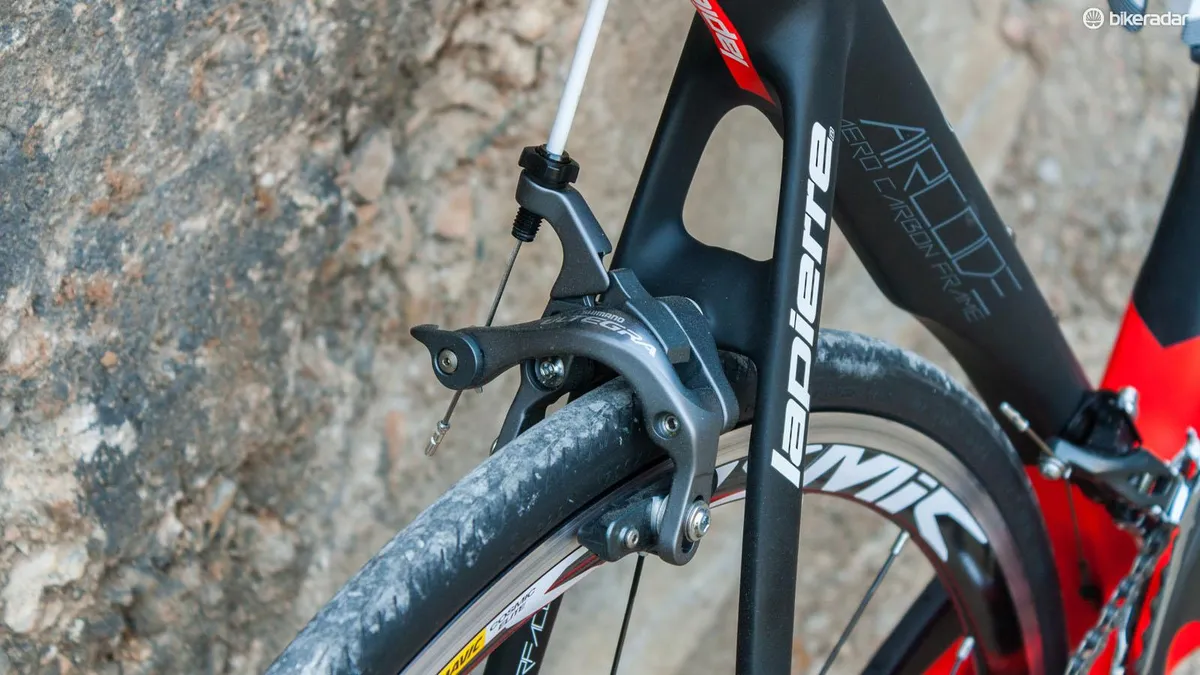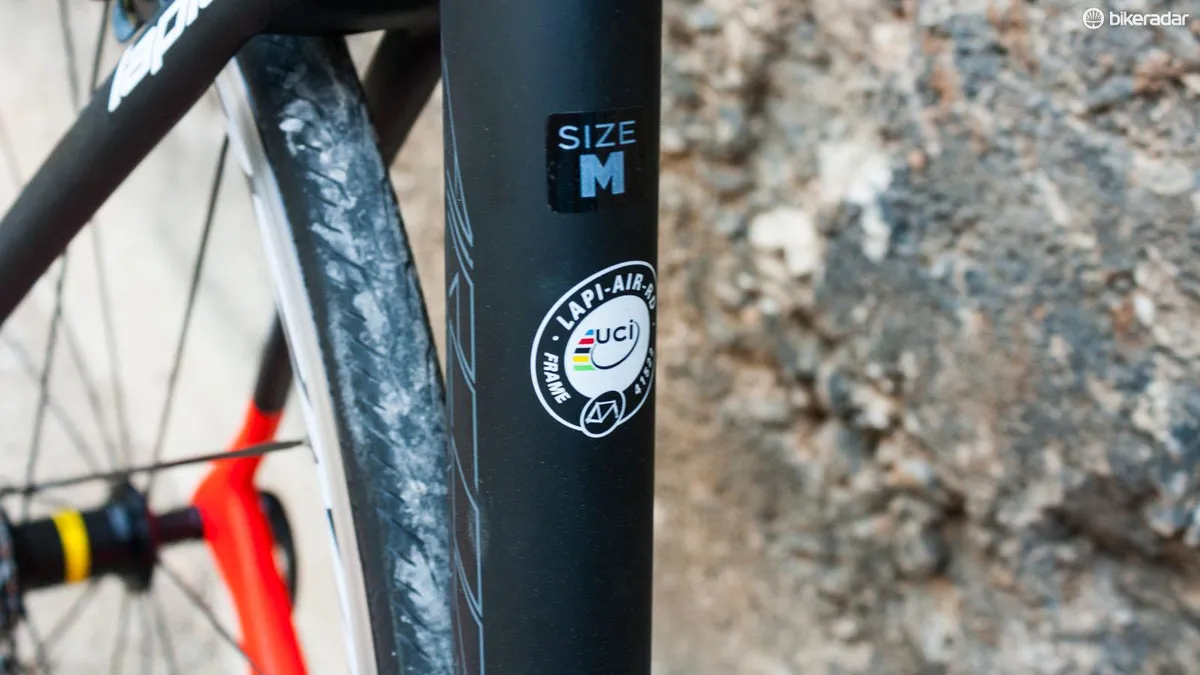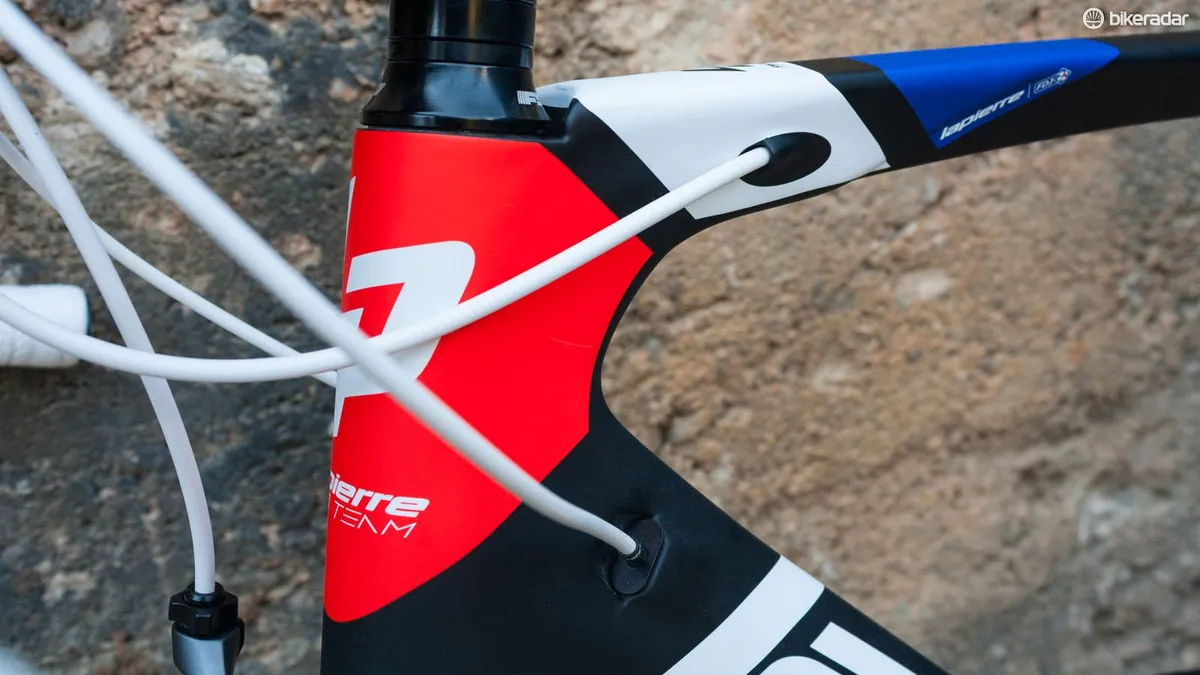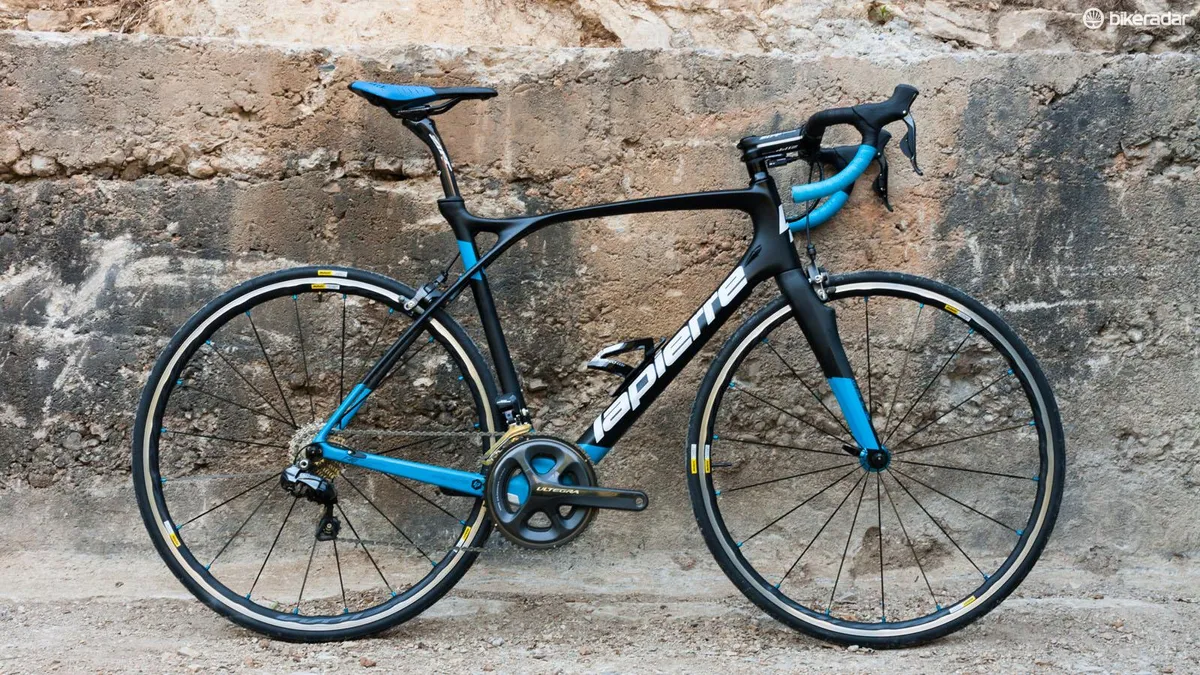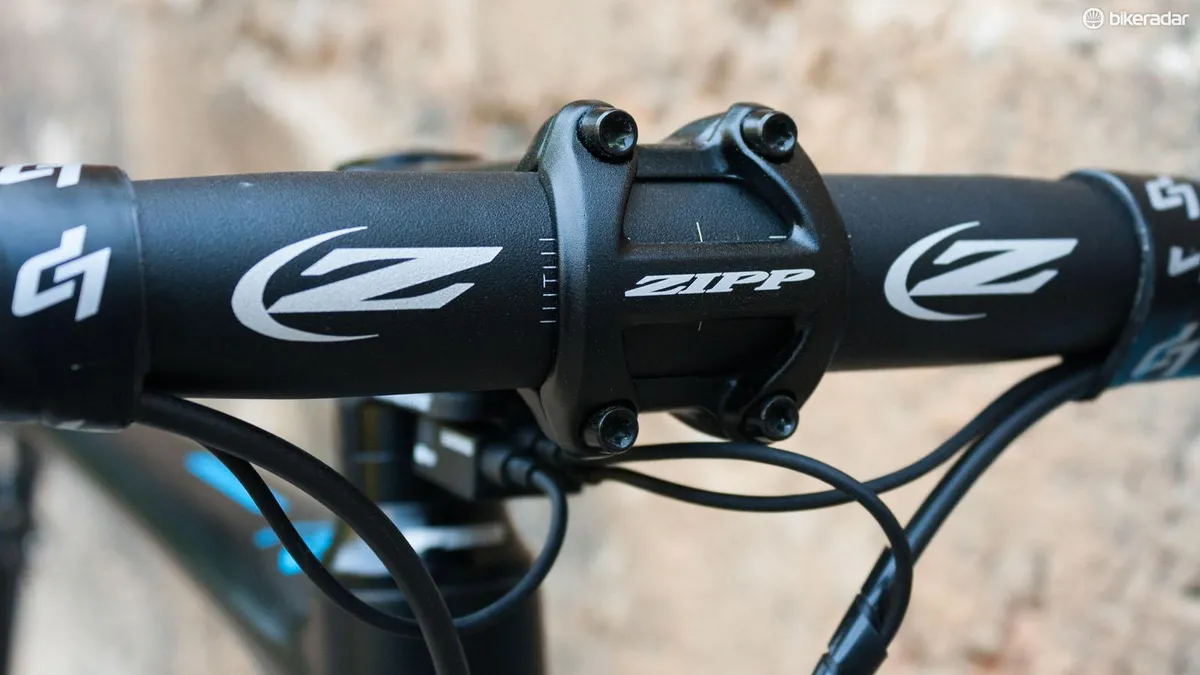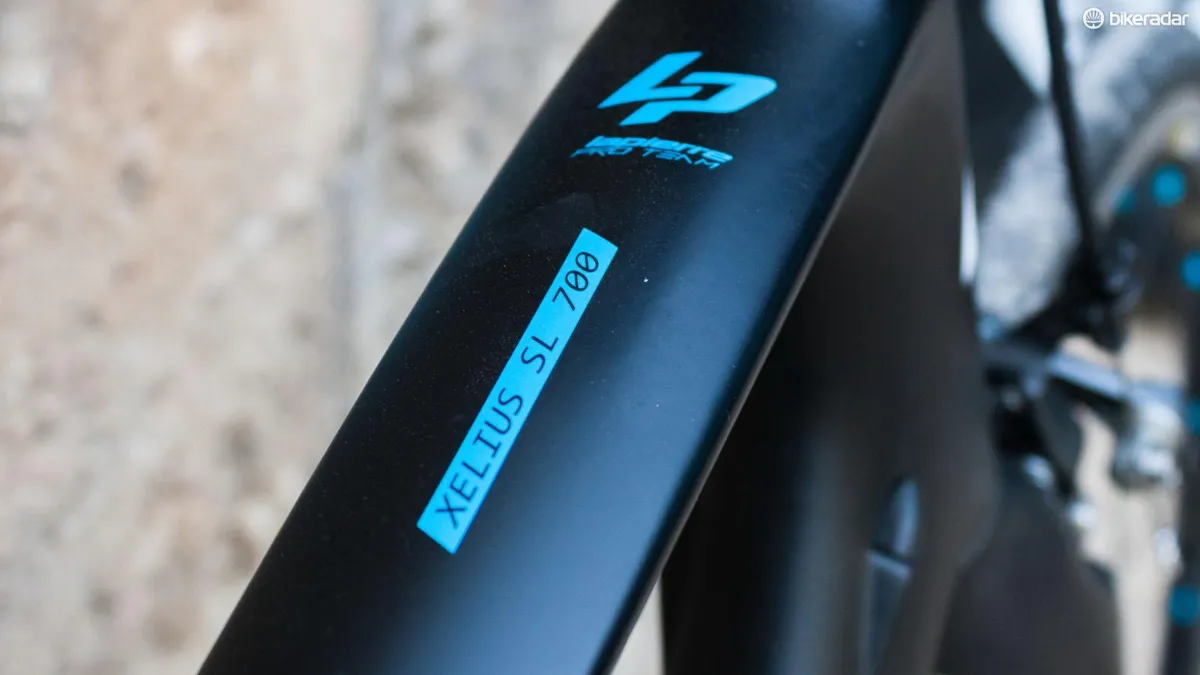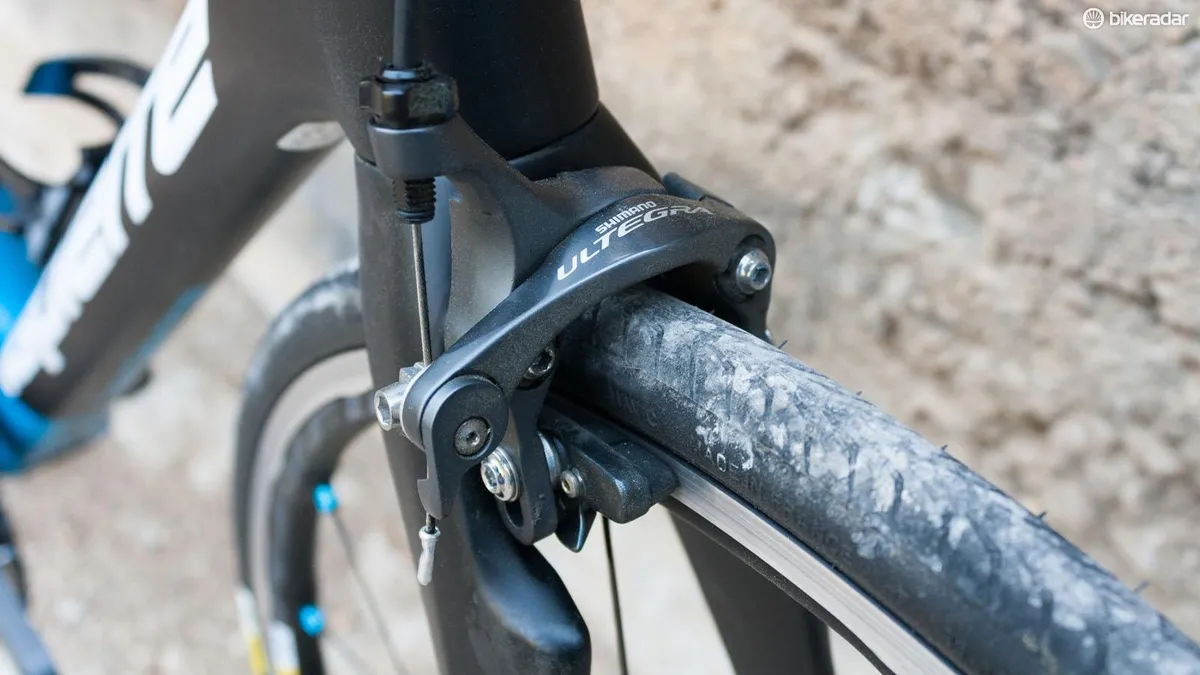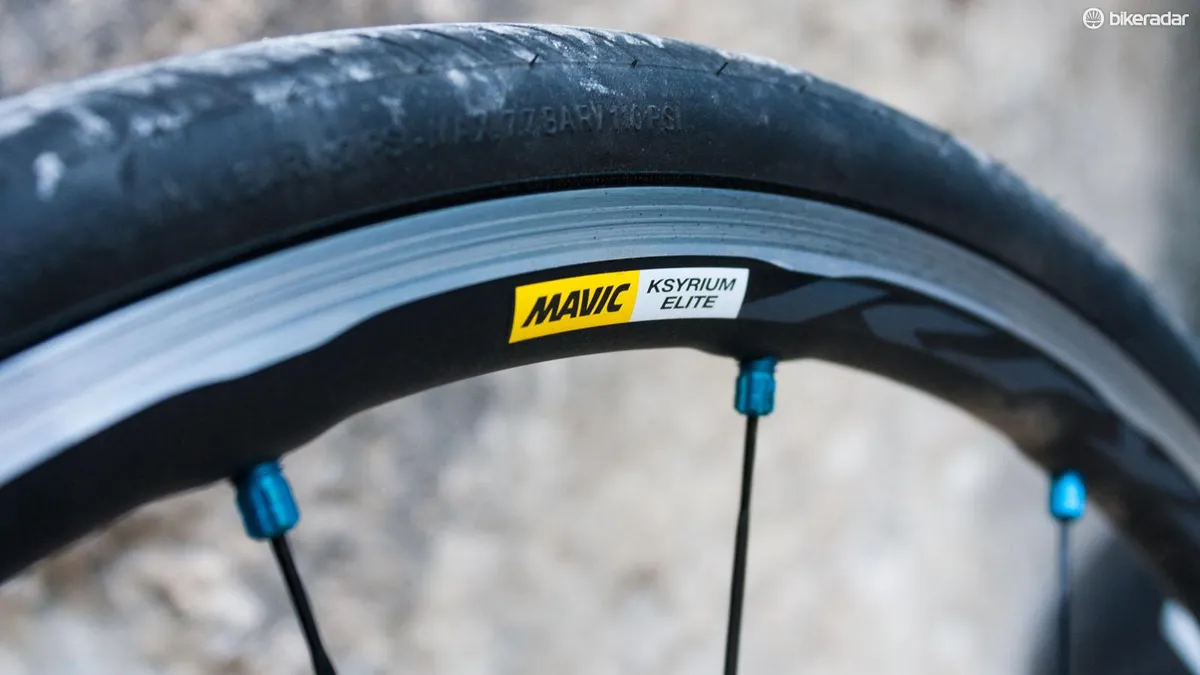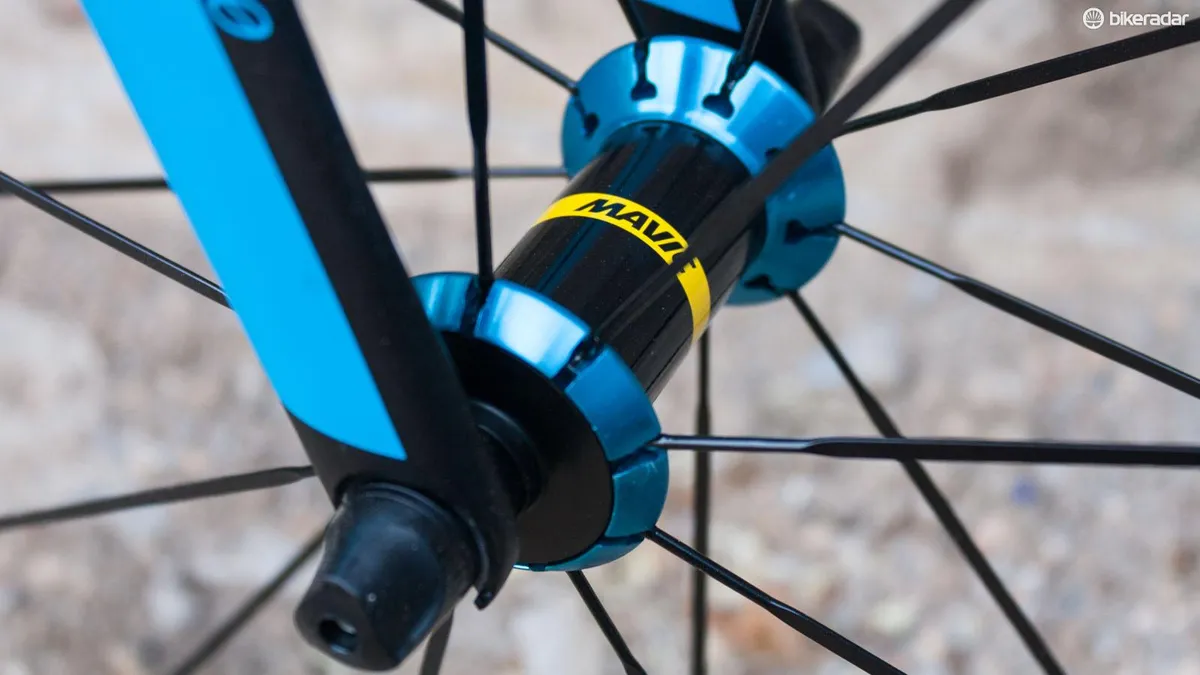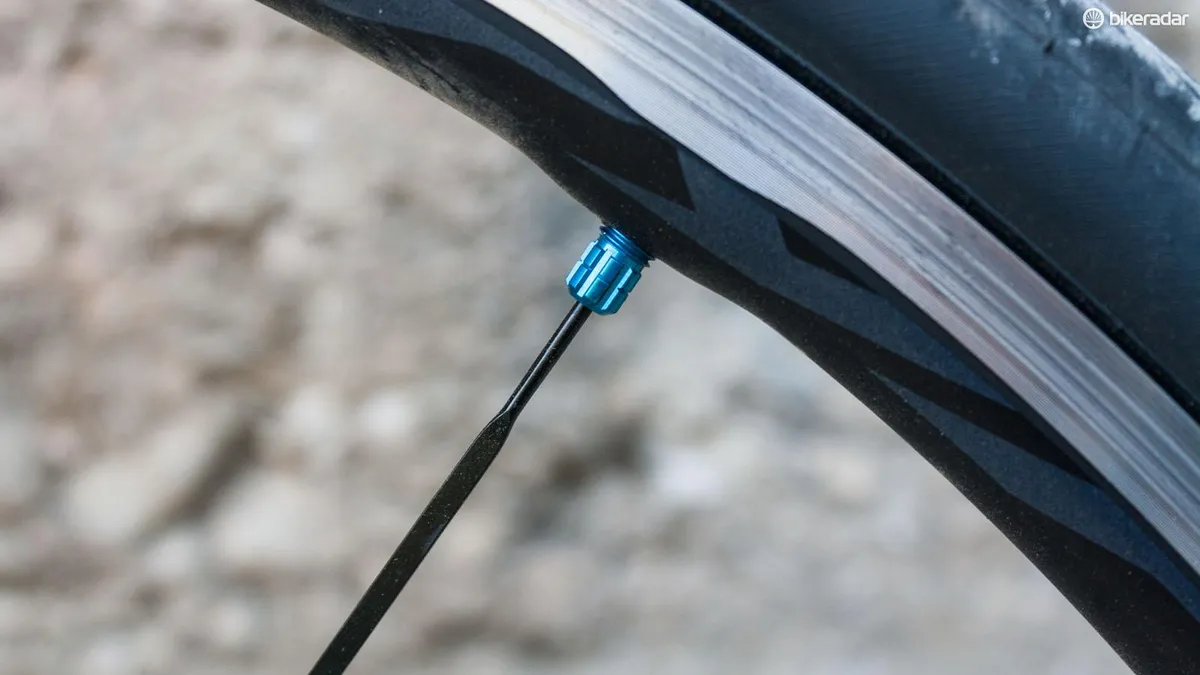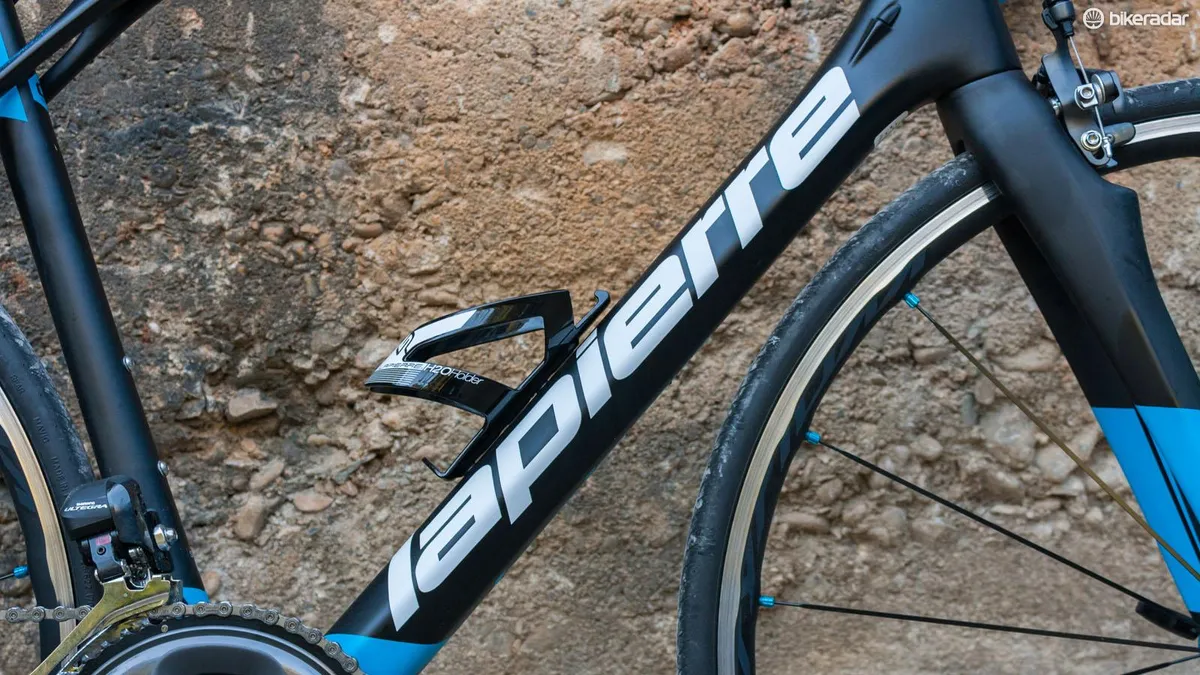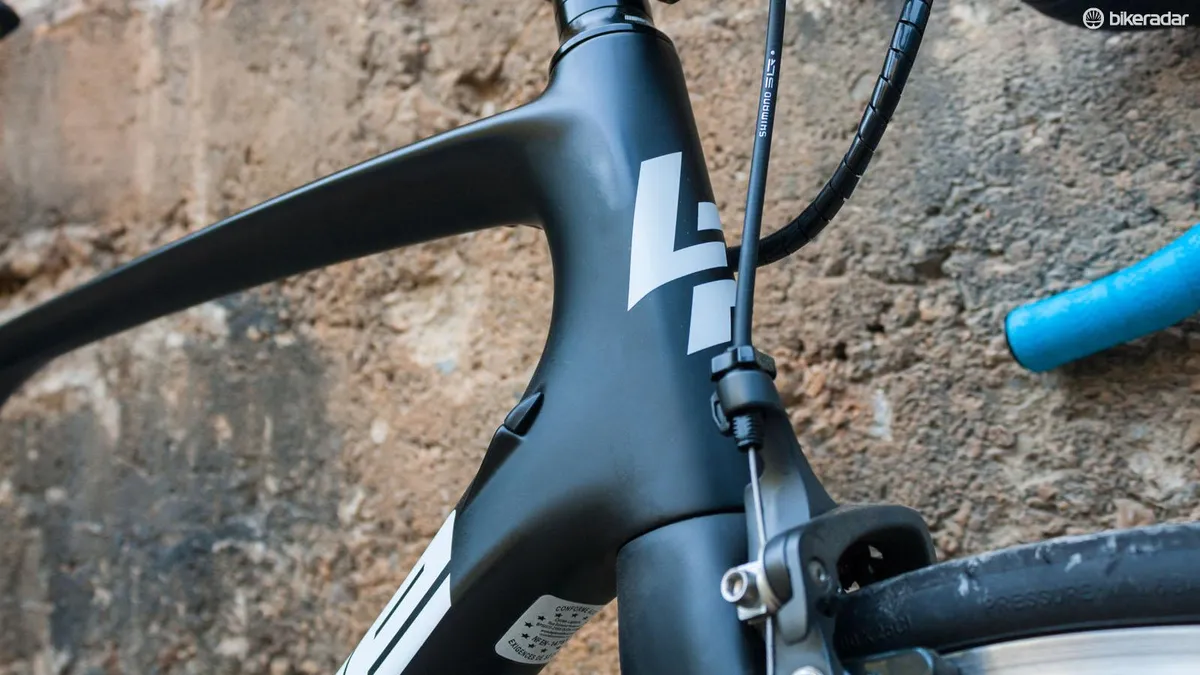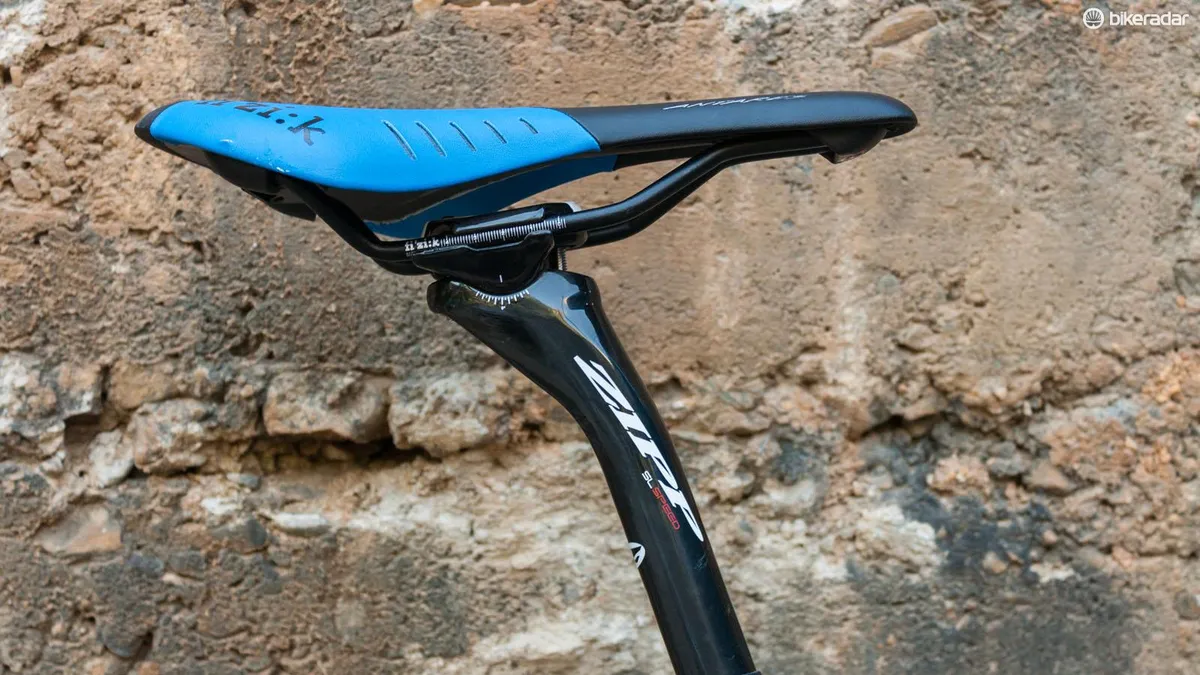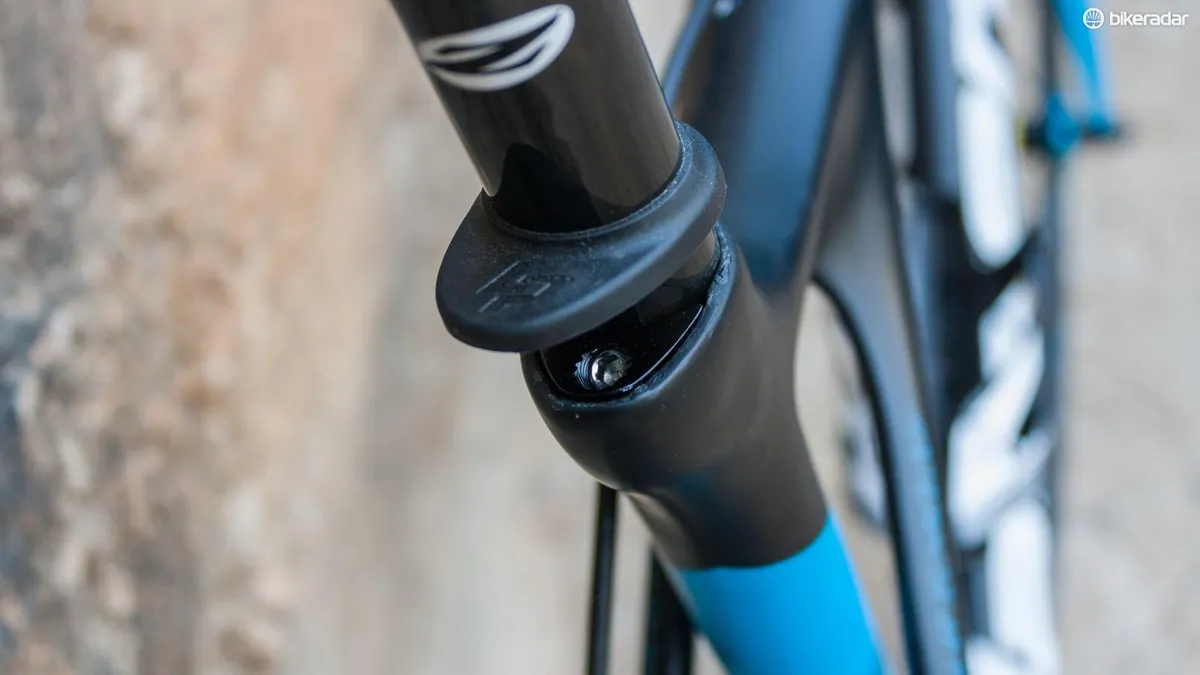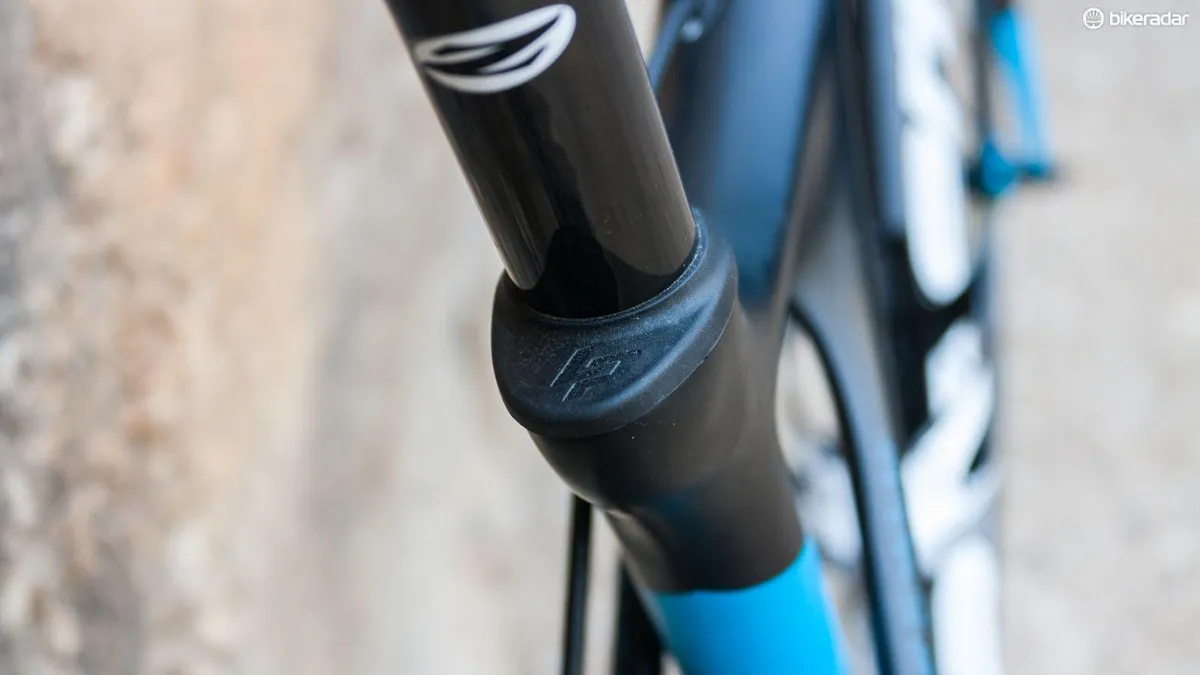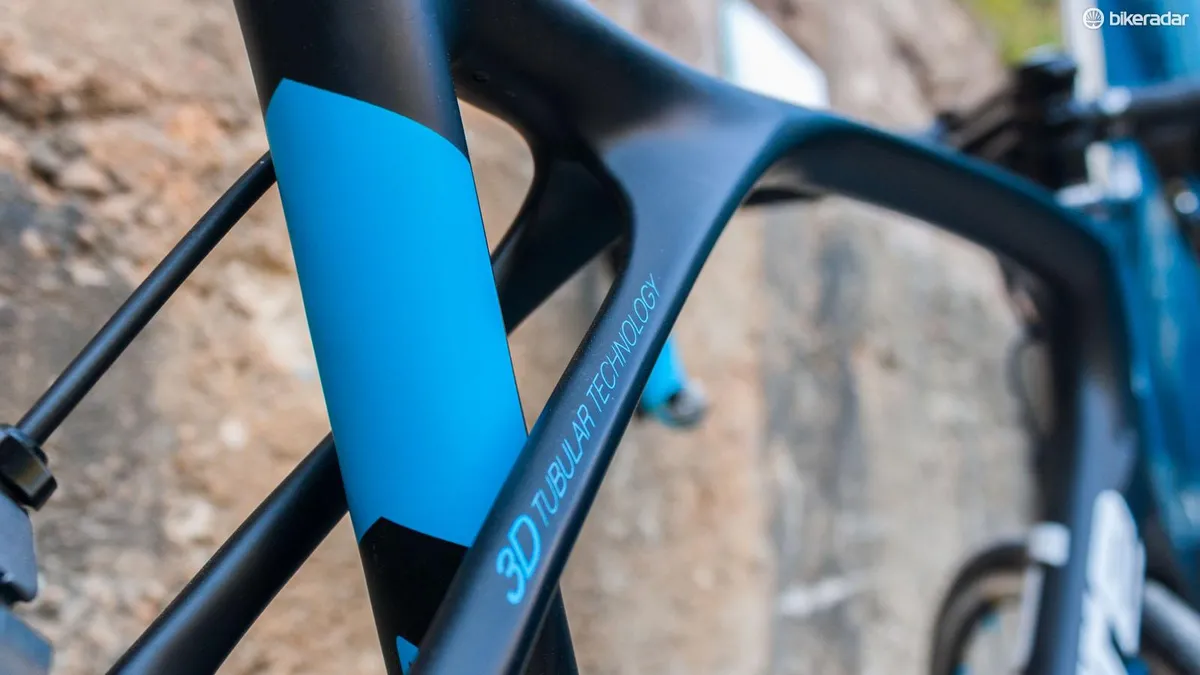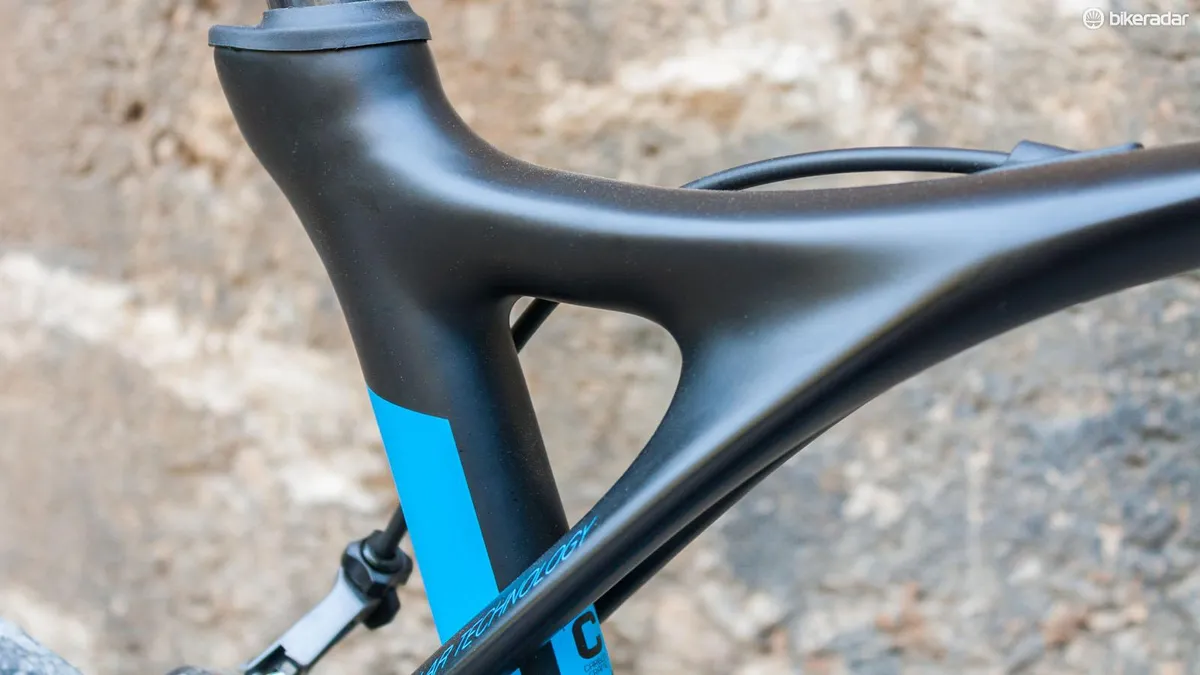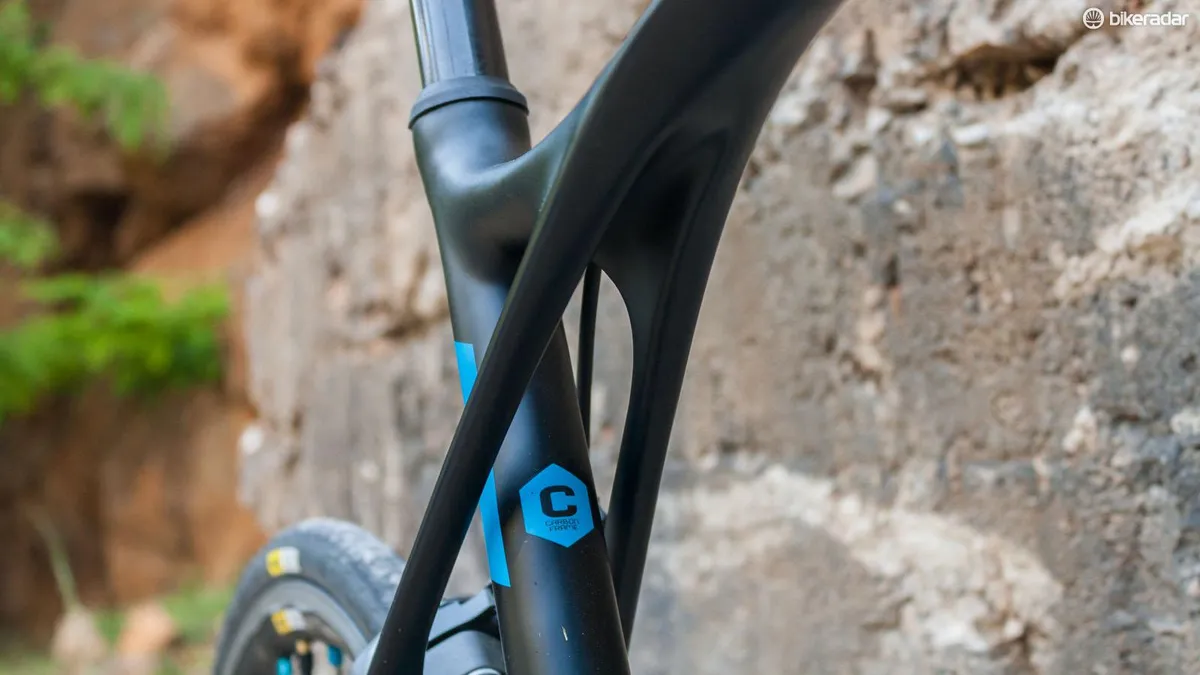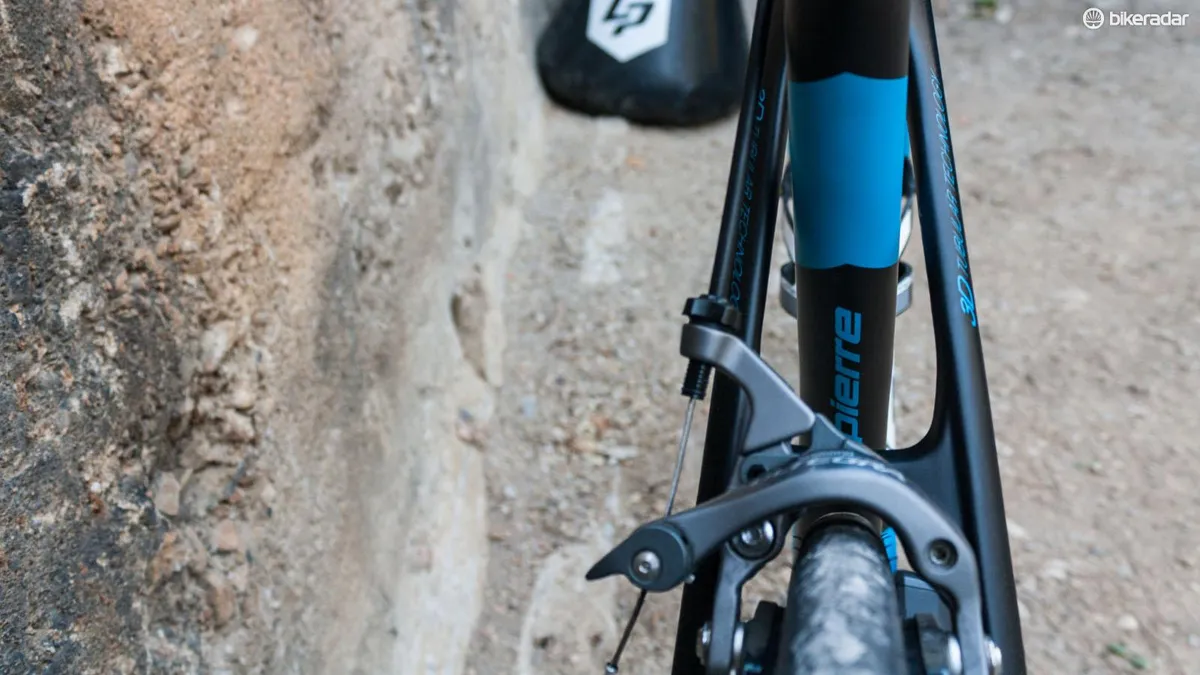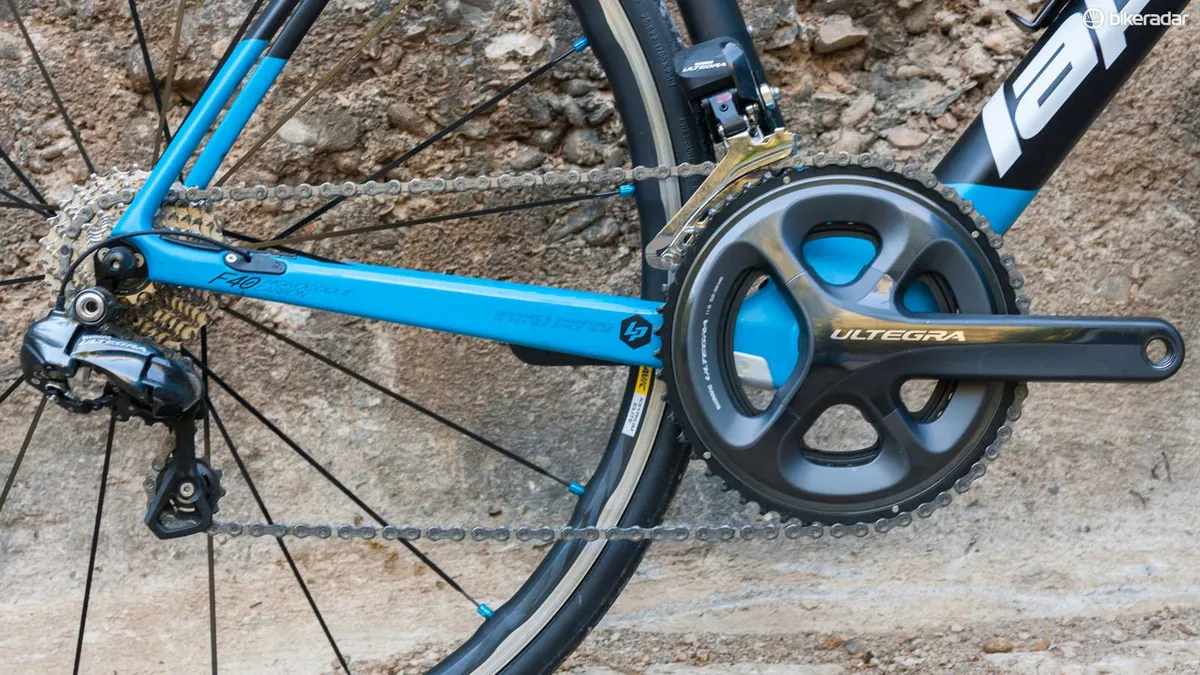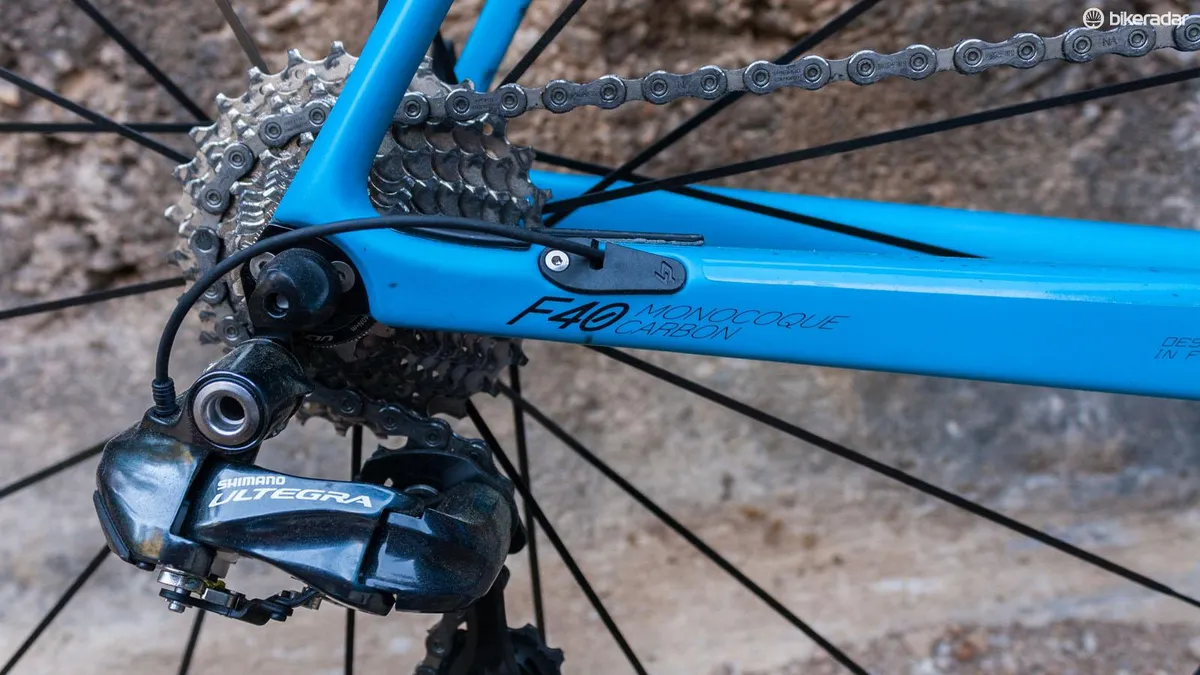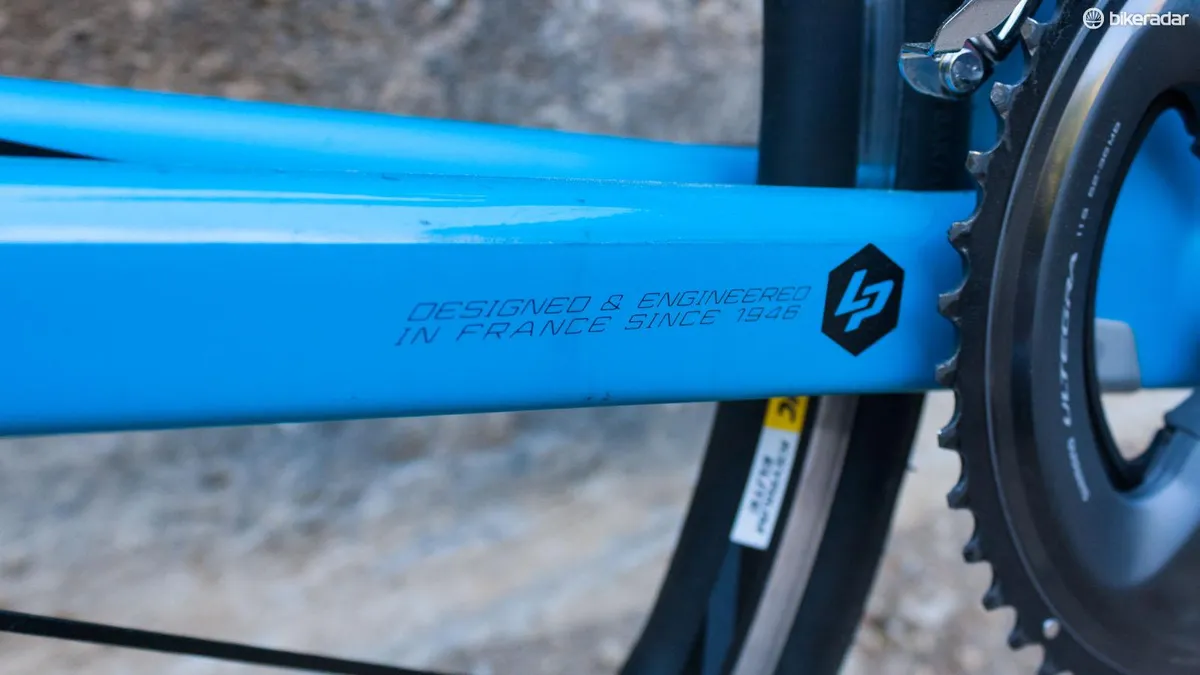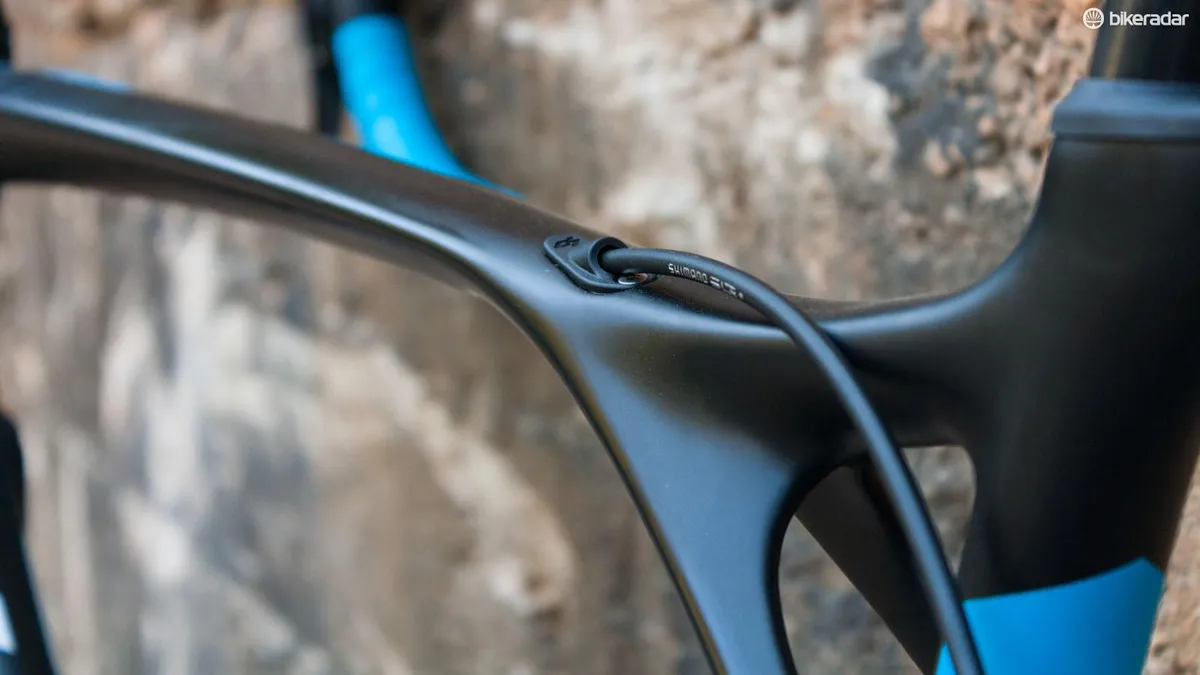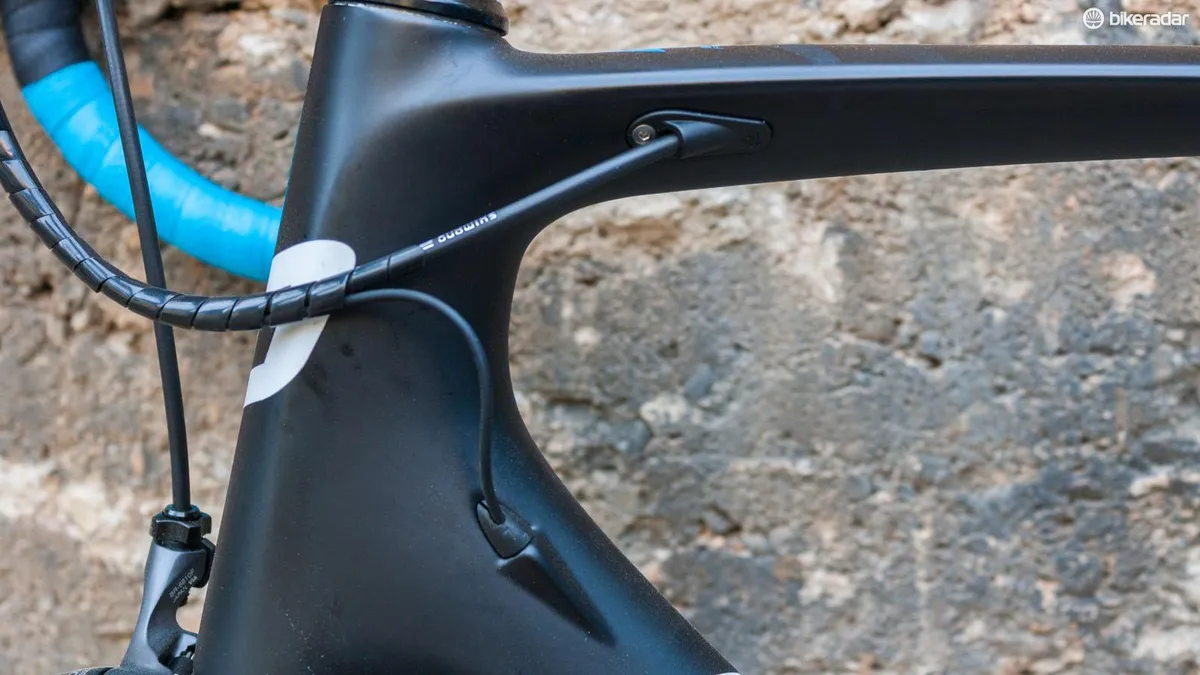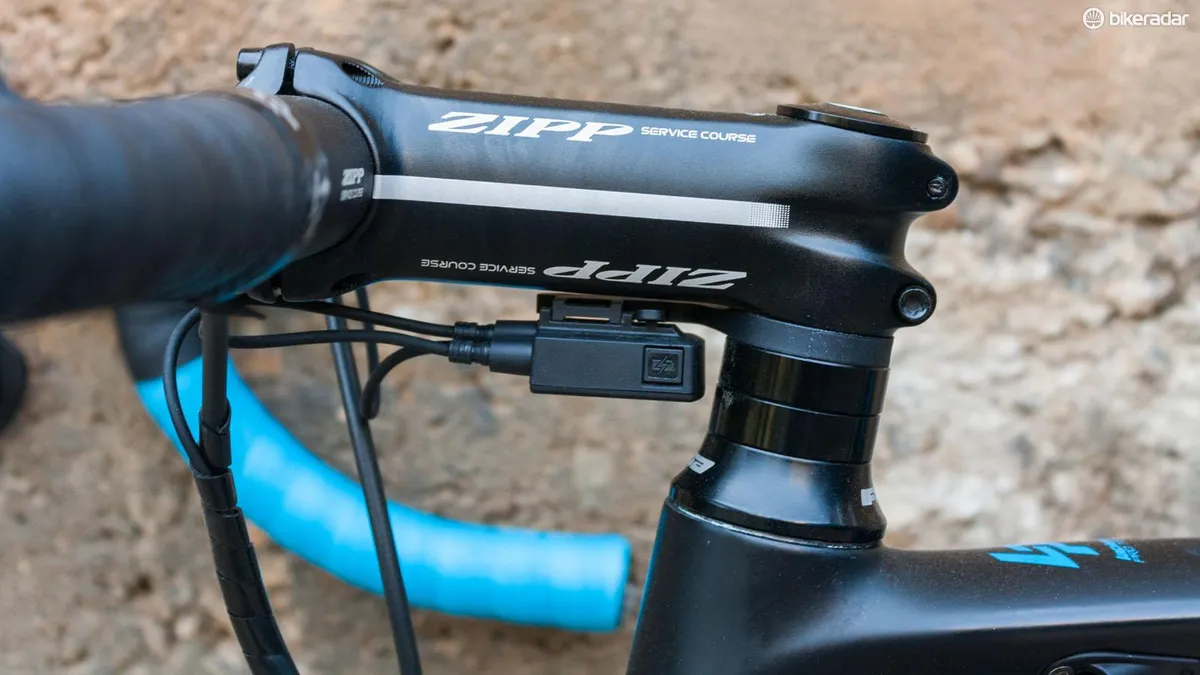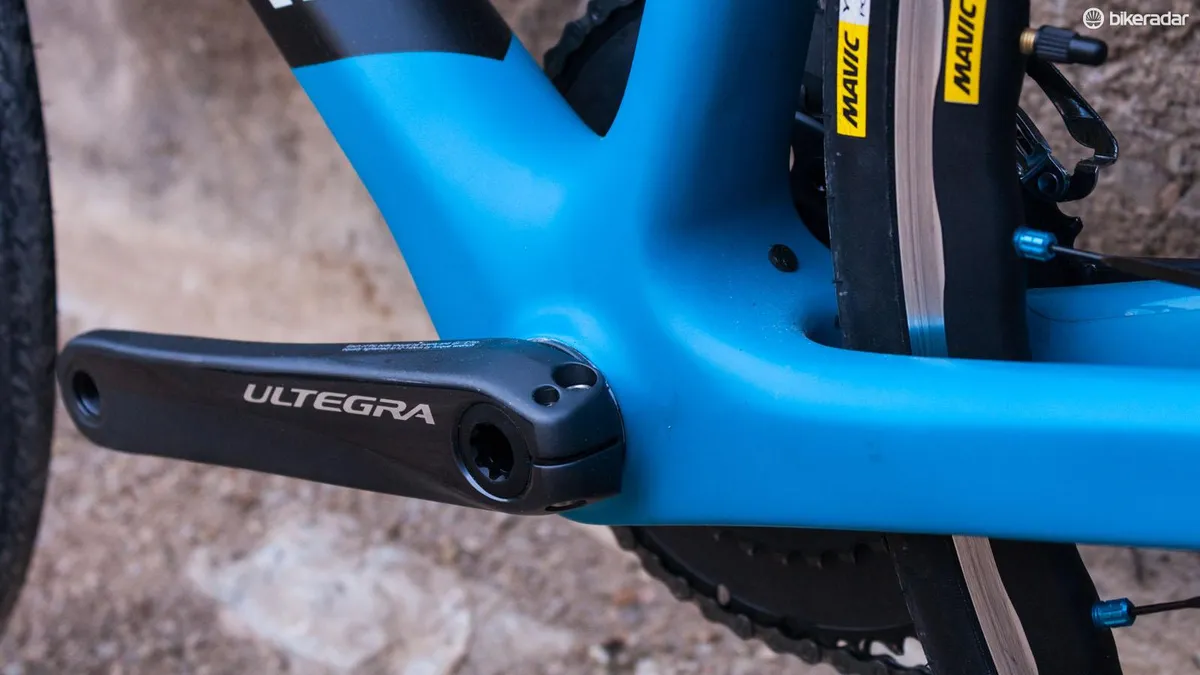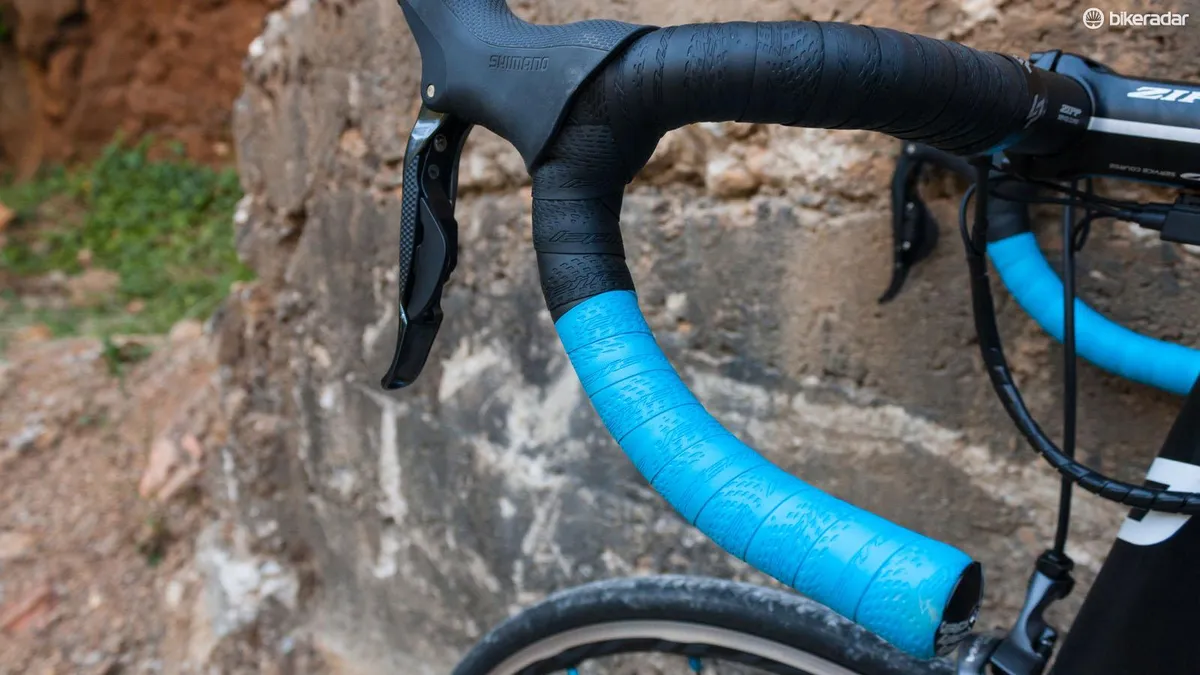Lapierre has today announced a new Aircode SL and a new Xelius SL. While these bikes were being designed and engineered, Lapierre’s headquarters in Dijon have also gone through the process of gaining ISO 9001 certification – a quality management standard to ensure consistent products.
Aircode SL
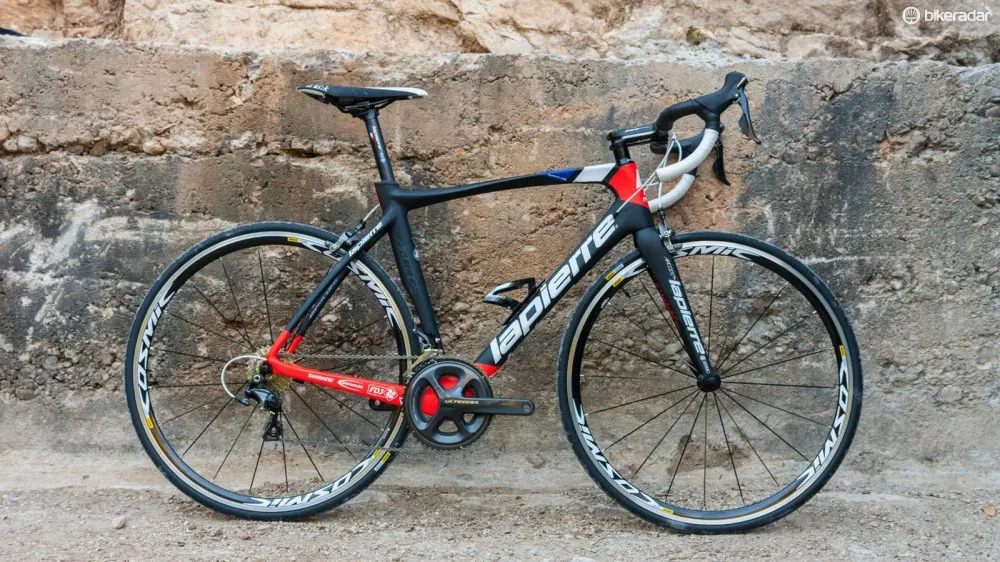
The Lapierre Aircode SL 600
The 2016 Aircode SL is an evolved, lighter version of Lapierre’s current aero road bike, the Aircode. Lapierre claims the SL frame is 20 percent lighter than the current Aircode, and that the fork is 20g lighter. Company representatives told us that frame stiffness remains unchanged but, because of the weight reduction, the SL benefits from an improved weight/strength ratio.
Lapierre engineers have also been working on the construction of the carbon used in the frame. In the seat tube, the length of the carbon layers has been reduced and the there are fewer layers in the head tube. The decision to play with the layup like this is one of the reasons Lapierre is claiming a reduced frame weight without sacrificing the strength present in the current Aircode. The carbon used in the frame also varies from 30 to 38 and 40-ton modulus, and by selecting different modulus carbon throughout the frame, Lapierre’s engineers have the tuned it for strength where it’s most needed.
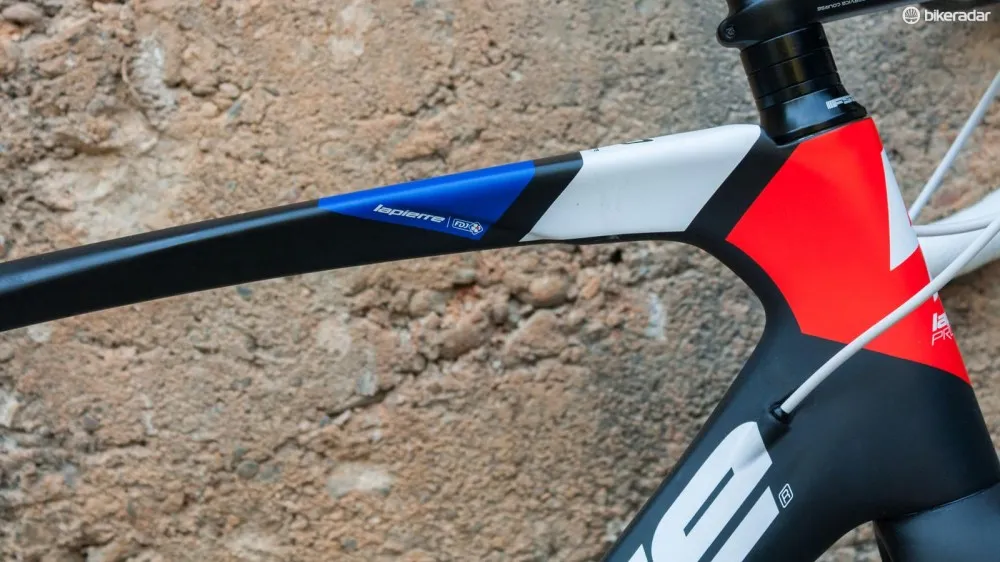
The paint on the Aircode is sublime – well finished, bright, tastefully chosen and patriotic
This is an aero road bike, so it almost goes without saying that the Aircode SL has been built to cut through the air. Like the 2015 bike, it has seat and down tubes that use Kamm-tail profiles, but it’s also been given what Lapierre call ‘Power Box technology’. If you’re not fluent in marketing speak, Power Box technology describes the way Lapierre’s engineers have designed the bottom head tube and bottom half of the frame to flow together in one smooth shape. The aim is to bestow the frame’s lower portion with more lateral stiffness than the 2015 Aircode, so it flexes less under hard efforts.
The Aircode SL will be available through Lapierre’s Ultimate custom programme, giving you control over the finish and component spec. There are also three off-the-shelf models: the SL700 (with Shimano Ultegra Di2), the SL600 (mechanical Ultegra) and the SL500 (with Shimano 105). All the drivetrains use 52/36 chainsets and 11-28 cassettes and Zipp HB bar and stem combinations, with some variations between models when it comes to saddles, wheels and seatposts.
Xelius SL
For 2016 Lapierre’s lightweight climbing bike, the Xelius, has been given a rework. The Xelius SL is a totally new incarnation of the current Xelius.
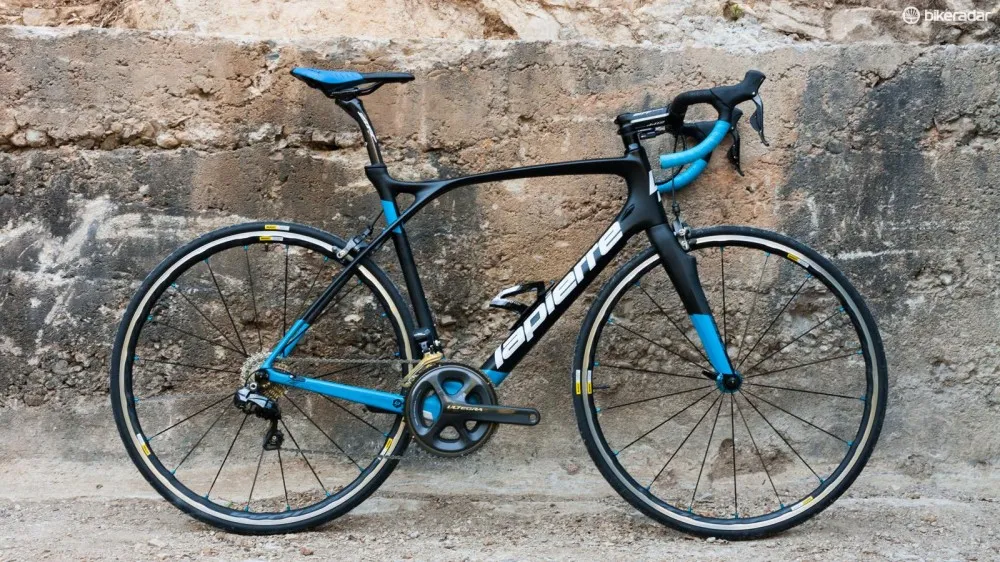
The 2016 Lapierre Xelius SL700
Claimed frame weight is 850g and Lapierre has designed it to have the lightest weight possible without sacrificing the stiffness you’d expect from a race bike. To achieve this, its engineers have worked on the carbon layup to provide stiffness in high-torque areas, and low weight elsewhere.
The most dramatic change comes at the rear of the frame with ‘3D Tubular Technology’. Rather than attaching to the seat tube, the seatstays now run past it and join the top tube. It’s a form that immediately brings GT’s Triple Triangle to mind. Unlike GT’s iconic design, however, Lapierre’s seatstays do not meet the seat tube at all.
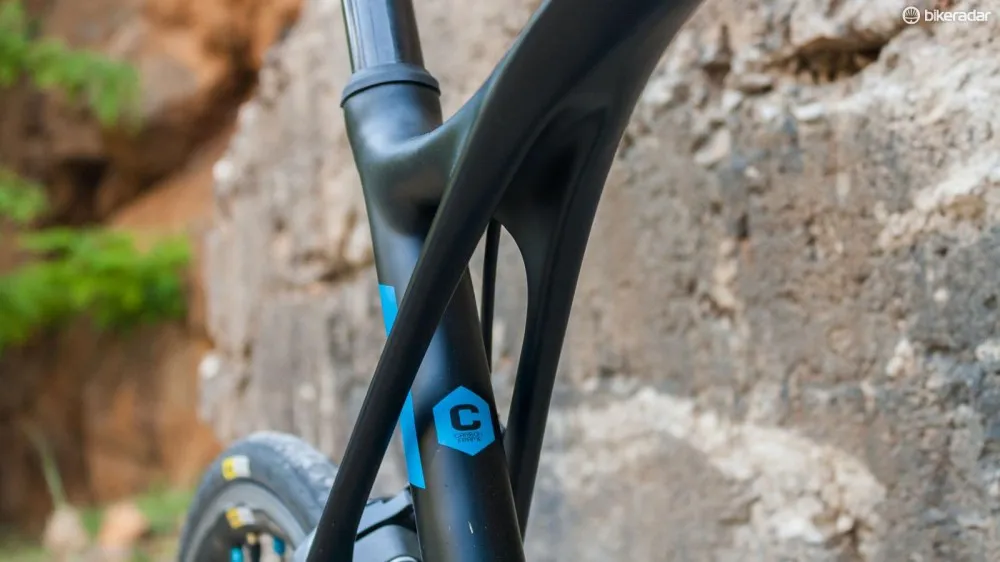
The 'stays run clear of the seat tube
As with the Aircode, the Xelius comes with couple of marketing monikers dangling from its down tube. It uses the Power Box technology described above, plus what Lapierre terms ‘Trap Door Technology’. With TDT, Lapierre has aimed to lower the bike’s centre of gravity by moving weight lower down the frame. Lapierre's own patent pending Di2 battery bracket/mount allows the battery to sit in the bottom of the down tube, so it’s out of the way but still easily accessible.
The Xelius SL shares 99 percent of the outgoing bike's geometry, but the chainstays have been shortened by 3mm from 408 to 405mm. Elsewhere, it’s got internal cable routing, an integrated seatpost clamp, 27.5mm seat tube and will be offered in six sizes, as opposed to the five of the bike it replaces.
The Xelius SL will also be available via the Ultimate custom program, and will come in a number of off-the-shelf flavours including the SL 700 (with Shimano Ultegra Di2), SL 600 (mechanical Ultegra) and the SL 500 (Shimano 105). As with the Aircode, each bike uses 52/36 chainset and 11-28 cassette and Zipp bar and stem combination, with some variation in finishing kit between models.
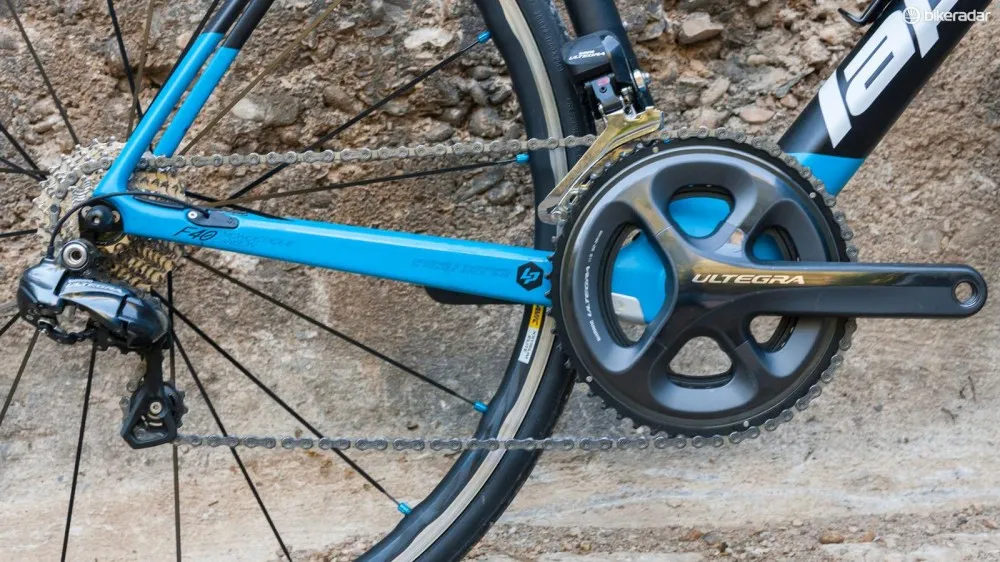
The Ultegra Di2 groupset is superb. Evey Xelius comes with a 52/36 crankset
The Xelius will also be available by the start of July, with pricing expected soon.
Both bikes, Lapierre reps told us, are a product of the firm's 14-year relationship with the FDJ team. There are research and development teams in FDJ and Lapierre, made up of engineers, mechanics and riders, who constantly evaluate and feedback to each other to improve their bikes to meet engineering and race objectives. By working so closely together and contstantly refining and testing what they are producing (at facilities at Besancon and Reims universities, and at the Magny-Cours & Velodrome of Roubaix) the teams aim to make bikes that actually hit the target of their intended purpose.
First ride impressions
I rode the Ultegra Di2-equipped Xelius SL 700 on the roads of southern France, and it impressed. It was a pleasure to climb with and even when I was tired and switching between being seated and standing, the frame felt light and taut enough to propel my flagging body upwards. When it came to ascending with the Aircode SL 700, it got the job done well although didn’t feel like as much of an uphill ally as the Xelius.
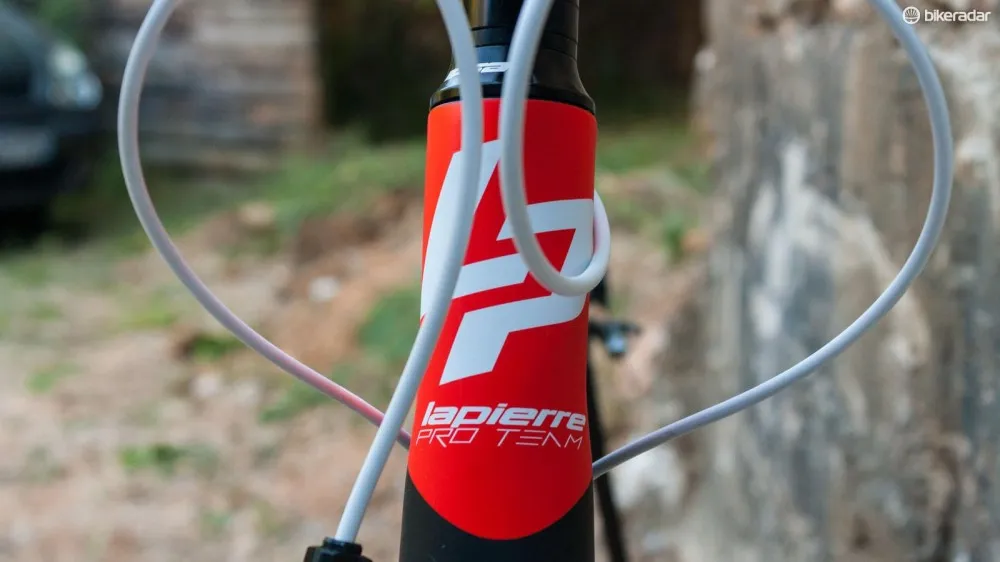
It’s a fact that anything with ‘Pro Team’ written on it instantly makes you faster and more attractive
The Aircode, however, effortlessly stamped its mark on flats and downhill sections. On a long, winding and gradual descent to the bottom of a gorge, it was supremely capable when carving through fast corners while I gathered speed and straight-lined the road for the quickest route to the bottom. That said, the Xelius was also adept at getting me down a tight, twisty descent with confidence and ease, even when I overcooked a bend and ran wide. Both test bikes were well specced with full Shimano groupsets, Fizik saddles, carbon posts and Zipp cockpits.
The Aircode felt firmer than the Xelius, especially at the rear. Compared with the Xelius, the back end could feel a bit dull through the seat post. That’s not to say the Xelius is flexy, but I found it to be a more fun, engaging bike to ride thanks to its balance of stiffness, weight and compliance. Both bikes were confidence-inspiring on more technical, tight descents and happy to peel in, hold a line and change direction at the drop of a hat – useful when speeding drivers are in the middle of the road and leave you little room.
Check the gallery above for further shots of the new Lapierre Aircode and Xelius.
